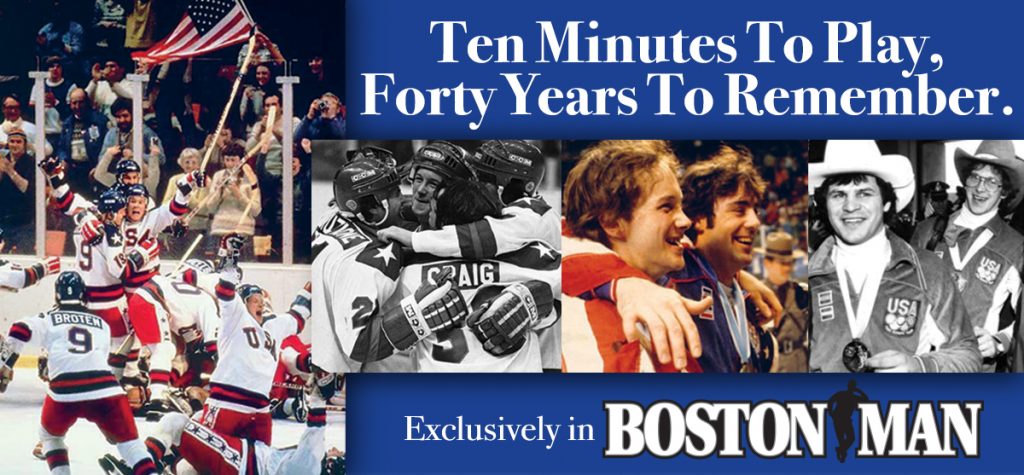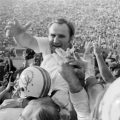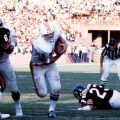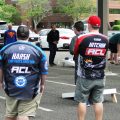BostonMan

Ten Minutes to Play, Forty Years to Remember

My article celebrating the 40th anniversary of the Miracle On Ice was originally published in the Winter 2020 issue of BostonMan Magazine. Click here to see a PDF of the article, or click here to see the article on BostonMan’s website. I’m very proud of this one, hope you enjoy it.
Ten Minutes to Play, Forty Years to Remember
February 22 marks the 40th Anniversary of the Miracle On Ice, still today regarded among the greatest, if not the greatest moment in sports history. BostonMan caught up with three key players from Team USA…Boston University alumni Jim Craig, Jack O’Callahan, and Mike Eruzione…to talk about the achievement and its aftermath.
The puck rose off Mike Eruzione’s stick and soared past Vladimir Myshkin’s outstretched pad. An arena full of 8,500 fans, along with a newly inspired nation, erupted.
For the first time, in this game and against this team, the U.S.A. was ahead. With exactly 10:00 on the clock.
Ten minutes. Against a team capable of six goals in that kind of hockey eternity.
The players wearing red, for maybe the first time in their lives, were rattled. They missed shots. They missed passes. They missed opportunities.
But this was still the Soviet Union team, arguably the greatest hockey team ever assembled. This team didn’t often go half a period without putting a puck in the net. The score, and the momentum, could change on a dime.
And they had ten whole minutes to correct this aberration, this trailing of a nation that wasn’t known for producing world class hockey players.
Forward Rob McClanahan, in his diary later published in Goal magazine, would call it the longest ten minutes of his life.
“We’re like, oh my God, that’s a long time against these guys,” defenseman Jack O’Callahan remembers.
Ten minutes from immortality. Survive these ten minutes, and you will someday be symbolically credited with taking down an Empire, armed only with a hockey stick.
Hold off the Reds for ten minutes, and forty years from now, the eyes of strangers from sea to shining sea will still tear up in emotion when they meet you.
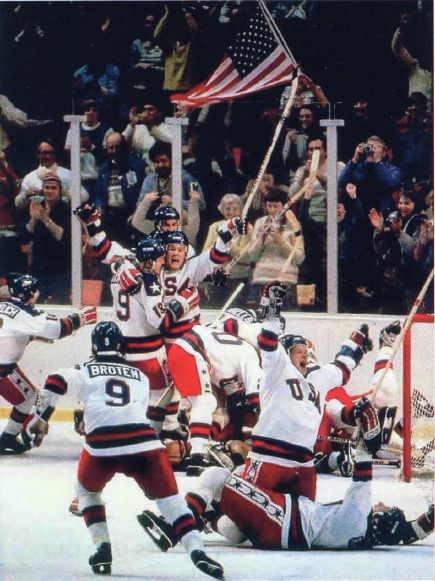
Celebrating a Miracle.
Unlike everyone else on Planet Earth, Herb Brooks was not shocked.
He built this team for this moment. He expected them to be here. From behind the bench, he brought a wave of calm to a heart-stopping situation, repeating three simple words:
Play. Your. Game.
Do what got you here. This is no fluke. You’re ahead in this game for a reason.
Indeed, as O’Callahan, goaltender Jim Craig, and team captain Mike Eruzione can tell you, they spent months preparing…mentally, emotionally and physically…to play ten third period minutes of inspired, fearless hockey against the greatest team in the world.
“Most teams,” Craig reflects, “once they got ahead of the Russians, did a prevent defense type thing. And the Russians crushed it all the time. But we didn’t. My strategy at that time was, don’t tie the puck up, don’t give them a chance to regroup, keep it going.”
Eruzione agrees. “In the last ten minutes, the Soviets had I think, seven or six shots on goal and three of them were from outside the blue line. As Robbie said, it was a long ten minutes, but boy, we played really well in those ten minutes.
“We had great team speed, great conditioning, our conditioning was off the charts. And you get solid goaltending like we had from Jimmy, and now you’re in every game that you can play.”
“We won every third period,” Craig correctly recalls.
This was no aberration. These boys really were exceptional hockey players, who paid their dues through months of backbreaking training, under a single-minded coach.
“The bar was so high, you had to do everything you could just to stay close to the bar,” O’Callahan remembers, “and every time you get close to the bar, Herbie would raise the damn thing.”
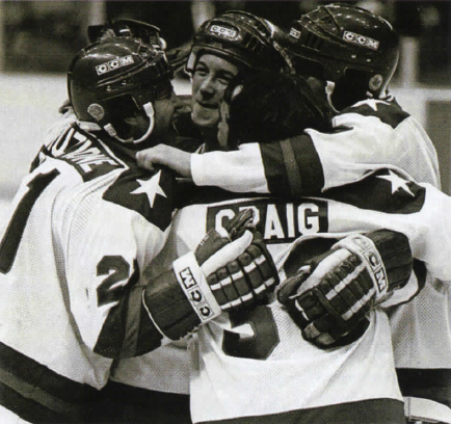
O’Callahan, Craig and gold medal teammates.
Not everything in Disney’s outstanding Miracle film is completely accurate, although the players will tell you it’s generally on point.
One deviation from reality is its much more sympathetic portrait of a coach who was about as sentimental as a kick in the groin. O’Callahan remembers a teammate (Phil Verchota, he believes) saying, “Boy, they really softened Herb up for the movie.”
“Yeah, he was a lot friendlier in the movie,” Eruzione agrees. “Herb didn’t care if you liked him, and there were a lot of times we didn’t like him. But it was important that we respected him, and there never was once a time when we didn’t respect him. Here’s the option, you deal with it or you quit.”
Like his teammates, Eruzione lived in perpetual fear of being kicked off the Olympic team. It was, they agree, one of Brooks’s favorite motivational tools.
O’Callahan says that “even Mark Johnson, who was our best player, leading scorer…Mark would probably tell you that even he wasn’t sure. Herb was like, if you don’t want to work hard at this and you don’t think you need it, fine. I got 200 other guys that want your spot on this team.”
Craig says the movie conversation where Brooks informs him that he’ll be replaced with Steve Janaszak didn’t happen, but it could have.
“It made sense, because if that was a way to motivate someone, Herb would do it.”
Through intense psychology and conditioning, Brooks assembled a team of players that would…and could…step up their game in response to fear. It was essential, especially if they were up a goal against the Soviets with ten minutes to play.
“You always hear the stories that Herb wasn’t looking for the best guys, he was looking for the right guys,” Craig says. “Every one of the players that were on our team had a makeup of what I call a winning underdog.”

Jack O’Callahan and Jim Craig, wearing the American flag and the gold.
Yes, an irate Herb Brooks did make his team skate following a tie with Norway, unlit arena and all. The actual event didn’t mercifully end with Mike Eruzione shouting, with every last ounce of his remaining energy, “I play for the United States of America!”
Eruzione sometimes tells people that it did, because he doesn’t like to disappoint them. But in reality, the drill lasted close to 90 minutes, and as Eruzione jokes, “it wouldn’t have taken me an hour and a half to figure that out.”
He does remember that Brooks successfully made the point.
“We did waves of five guys at a time, and we did them for about 15 minutes; he blew the whistle and we stretched, and then he blew the whistle and we did them again. Mark Johnson smashed a stick against the glass, throughout the skate a lot of guys were doing that. And Herb said, ‘If I hear another g***damn stick break against the glass, you’ll skate till you die!’
“We did a few more, he brought us in the locker room and he said, ‘If you play this way again tomorrow, you’re going to skate again.’ We beat Norway the next night 8-0.”
O’Callahan had several discussions with Miracle director Gavin O’Connor about the script. He recalls that O’Connor learned about skating in darkness almost in passing from O’Callahan.
“None of that was in the movie,” O’Callahan says. “It wasn’t in the script, so I told him about it. He goes, ‘How the f*** is that not in the script?’ He’s like, that’s gotta be in the movie. I said yeah, it was a pretty big watershed moment for our team.
“I have a picture of Herbie standing there holding a whip from 1980. All that stuff then ends up in the movie.”
“Herbie never settled, and it was non-negotiable,” O’Callahan says of their hard-boiled but visionary coach. He gives Brooks credit for revolutionizing North American hockey.
“He was like, I am going to do this differently because I think this is the only way we can win. And he was the only one who thought that at the beginning. Everyone in the world was like, not a chance, this guy’s nuts.”
Brooks, who we sadly lost in a car accident in 2003, is said to have cried following the Soviet game. But he quickly shook it off. There would be no ‘Whatever happens, I’m proud of you’ speech before Finland.
Just the opposite. He informed his team that they would take a loss to their “f***ing graves.”
Magazines have space limitations, but the contest against Finland shouldn’t be overlooked. The Finns weren’t pushovers, and led 2-1 after two periods.
But on strengthened legs from a long post-game skate weeks earlier, the U.S. scored three goals in the third and took the gold.

Mike Eruzione and Jack O’Callahan, two hockey players who would never have to pay for a meal again.
Ten years later, Roger Waters of Pink Floyd would perform The Wall at the remains of the Berlin Wall. On Christmas Day 1991, the Soviet flag was lowered from the Kremlin for the last time. Today the Soviet Empire is an increasingly distant memory. The 1980 U.S. hockey team is not. In the four decades since, O’Callahan, Eruzione and Craig still experience gratitude for ‘beating those Commie b***ards’.
Jack O’Callahan was an American history major at Boston U., and he spent a great deal of time explaining the giant disconnect in America in 1980, especially between generations, to O’Connor for the film. Much of that appears in the movie’s opening scenes.
He now lives in Jacksonville and is a senior managing director at Ziegler Capital Management, a firm based in Chicago where he played six seasons as a Blackhawk.
He hasn’t, he says, had a single negative conversation in 40 years.
“I would say the most prevalent messaging for me…predominantly the discussion is about family. It was all about, ‘I remember watching that, I didn’t think my dad knew how to cry and I remember seeing him bawling his eyes out. You know, he was a 45 year old Korean war vet, crying his eyes out over a fricking hockey game.’”
Mike Eruzione works for Boston University and still lives in Winthrop. He and his wife founded Winthrop Charities, supporting local families and causes. His coming book, The Making of A Miracle, was written for one reason, he says. It’s so his grandchildren know that he did more in his life than play hockey for two weeks in Lake Placid.
But Rizzo understands that he’ll forever be known for those two weeks.
“For 40 years, I come across people all the time and there’s a smile on their face. Or sometimes I’ve had people come up to me and start crying, because the moment meant that much to them. I must have sent out 15 or 20 pictures today to kids, you know, ‘I wasn’t born in 1980 but I saw the movie, my grandfather and my aunt and uncle told me about it, can you send me an autographed picture?’
“I live in Boston and I root for the Patriots; a lot of people don’t like the Patriots. But when it’s the Olympic games, it’s a nation that feels a part of it.”
Jim Craig has also written a new book, titled We Win: Lessons On Life, Business and Building Your Miracle Team. His group, Gold Medal Strategies, assists businesses in motivational training. The book, he says, explains that Lake Placid wasn’t a miracle and why.
Craig treasures having become friends with Bobby Orr after idolizing him as a kid. Today, he tells the story of being idolized by a young Dave Grohl, leader of one of music’s biggest acts.
“As our team was going to light the cauldron at Salt Lake City, he was there as a performer. He called me up and we got a chance to talk. He was really, really excited. So here’s this guy from the Foo Fighters, as we’re talking to him, he goes to me, ‘Jimmy, I’m going to sing a song. I’m going to dedicate this song to you.’
“And it’s ‘My Hero’. So that song became obviously my favorite.”
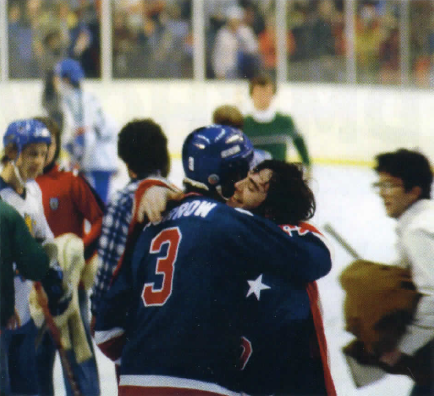
Jim Craig with defenseman Ken Morrow.
Jim Craig doesn’t think the gold medal is the best thing that’s ever happened to him. That sounds astonishing, but given his explanation, it isn’t surprising at all.
“I always tell people, don’t ever let your memories be bigger than your dreams. It’s like, Michael says nothing could have topped that. To me, that would be really boring if nothing could have topped that.
“This year we had our granddaughter Shae, first time my wife and I would be grandparents. That’s the next greatest thing. My daughter got married in the year before that. My son got married and had me as his best man at the wedding, which my father was for me.
“There are so many next best things that I don’t want to look back at something 40 years ago and call it the best thing that happened to me, because it isn’t. It was one of the best things, but it certainly isn’t the best thing.”
As a grateful nation continues to treasure the memories 40 years later, millions of Americans can share our goaltender’s outlook.
The Miracle On Ice wasn’t the best thing that happened to America.
But it certainly was one of the best things.
Did this post make your day a little bit?
I hope so. If it did, I would really appreciate your support.
When you use this link to shop on Amazon, you’ll help subsidize this great website…at no extra charge to you.
Thanks very much…come back soon!

Manny Guerra, star goaltender of the gold medal-winning U.S. Paralympic hockey team.
Another Miracle On Ice
If you love the story of an determined underdog hockey team beating overwhelming odds, and winning a gold medal in the last moments of a match to thunderous chants of “U.S.A!”, have a look at a YouTube video called “2002 Paralympic Sled Hockey Video 18”.
It’s the final shootout between the U.S. and Norway for the Paralympic gold, that ends with Manny Guerra winning it for the U.S. with an outstanding save. The hair-raising moments just in this short video build up an excitement that automatically conjures up memories of Lake Placid.
You would think the athletic world wouldn’t underestimate hockey players wearing USA jerseys, especially when playing on their home ice. But in 2002, the USA Men’s Sled Hockey Team were ranked sixth in a pool of five teams for the Salt Lake City Paralympics. The fifth ranked team? “TBD”.
Former Bruins star Rick “Nifty” Middleton, the coach of the team, told Boston Sports Desk that “We were only there because we were the host team.”
But as sports fans in this town well know, Middleton is no stranger to excellence in hockey. 448 goals and 540 assists are totals that get your number hanging from the rafters at TD Garden.
Middleton understood commitment, and he saw it in this team. Getting out of bed at 5:00 AM to greet the players for a 6:00 ice time practice, he saw a silhouette of wheelchairs in the morning sun, beating him there. Just two weeks after the September 11 attacks, none of them were unwilling to fly to Buffalo and start training to represent the United States.

Never underestimate U.S. hockey players, especially on their home ice.
Before an almost empty arena, the team managed to survive and triumph in their first game against Japan. The next game, to a packed house, brought back memories of Czechoslovakia…the U.S. dominated Canada, the number one seed, by a score of 5-1.
A hard fought 2-1 victory against second-seeded Norway…who had won the gold in Nagano in 1998…followed, and the U.S. team then trounced Sweden and Estonia to once again take on Norway for the gold medal.
Before a crowd of over 8,300 fired up Americans chanting “U.S.A!”…a sight that was no doubt familiar to any American over 30 who was present…the U.S. and Norway fought to a 3-3 tie and through a scoreless 10-minute overtime period. With the audience probably having bitten off their remaining nails, the game went to a shootout.
In the shootout, the U.S. fell behind 2-1 before Chris Manns beat Norway goaltender Johannsen high on the stick side, tying the shootout. Then Kip St. Germaine sent another into the top shelf to give the U.S. the lead.
And once again, it was up to a goaltender.
Manny Guerra, like Jim Craig before him, was equal to the task, stopping two tough breakaways to give the U.S. the gold in Salt Lake City.
Today Middleton, along with assistant coach Tom Moulton, are working with filmmakers Yaron Kaplan and Arthur Bonner to make a movie called “Tough Sledding” about the improbable victory on ice that came 22 years after the 1980 U.S. hockey team stunned the world.
Nifty, today the president of the Boston Bruins Alumni Association, has said that nothing he accomplished in ice hockey…and he’s accomplished quite a bit in ice hockey…gave him a greater thrill than seeing the U.S. Paralympic team take the gold.
You can find out more about this equally miraculous upset, and the accompanying film in the works, at www.toughsleddingthemovie.com.
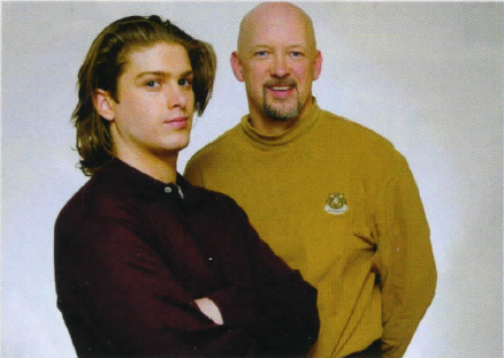
SSG Michael Mantenuto, with the hockey player he portrayed in Miracle.
SSG Michael Mantenuto, 1981-2017
Michael Mantenuto, the talented young actor who portrayed Jack O’Callahan in Miracle, did much more for his country than play a hockey hero in a movie. He became a national hero himself, enlisting in the U.S. Army and serving abroad in Operation Inherent Resolve, dedicated to defeating ISIS in Iraq and Syria.
Mantenuto was an even better soldier than he was an actor. He was a highly decorated Green Beret and Special Forces Communications Staff Sergeant, returning home with quite a few medals of his own for his service.
Tragically, on April 24, 2017, Mantenuto was found dead of an apparently self-inflicted gunshot wound. He left behind a wife and two children.
O’Callahan is, of course, aware of the story.
“Four or five tours in the military, who knows what he went through over there. It’s just a horrible thing right now,” he sympathizes. “22 military veterans are killing themselves every day in the United States. It’s awful. And Michael’s one of them, and maybe I can help tell the story from the athletic side and transition into the military side.
O’Callahan recently made an appearance in Boston, with Navy Seal Jason Redman, to speak for the Concussion Legacy Foundation. The Foundation supports athletes and veterans who have suffered brain injuries. You can visit their website at https://concussionfoundation.org/.
“We just can’t keep ignoring this,” he says. “Michael was the victim of this. I feel terrible for him.”
Here in New England, several outstanding foundations are dedicated to helping our returning heroes reclaim their lives. Please consider supporting them.
Skate For The 22 was founded by Army and Air Force veteran Bobby Colliton, who himself has lost four friends to suicide. They offer skating and hockey lessons, at no charge to veterans, along with an opportunity to be part of a team environment again.
The New England Center and Home For Veterans is dedicated to helping veterans who are at risk of homelessness achieve economic self-sufficiency and live independently. Their programs include vocational training, residential and meal services, and transition into housing.
The Home Base program, operated by the Red Sox Foundation and Massachusetts General Hospital, is dedicated to supporting and treating veterans suffering from the “invisible wounds of war”…including PTSD, anxiety, depression, substance abuse and other struggles.
Skate For The 22’s Facebook page: www.facebook.com/skateforthe22
New England Center and Home For Veterans: https://www.nechv.org
Home Base: https://www.homebase.org
Boston Heroes
Jim Craig, Mike Eruzione, and Jack O’Callahan are all Boston U. alumni. With teammate Dave Silk, they are sometimes referred to as the “B.U. Four” on the U.S. team.
All three were born and raised in the Boston area, the same place where mobs took on British soldiers, threw chests of tea into a harbor, and began an underdog revolution of their own.
O’Callahan grew up in Charlestown, just steps from the Bunker Hill Monument. He tells an amusing story of a mini-squabble with a reporter following the gold medal victory.
“After we beat Finland, Mark Pavelich and I got drug tested. Pav and I sitting in there with two Finnish guys, while the whole team goes across the street to this big press conference. They’re feeding us Kirin beers, these Japanese beers. So Pav and I pounded like three of these beers down.
“By the time we get back to the locker room, it’s empty cause the team’s across the street. So we took off our skates, we put on our sneakers and we run across the street. We have a blast, and this Boston writer says, I have a question for O’Callahan.
“I’ve already got like three, four beers in me, right? He’s like, how’s it feel to be the first person from Charlestown Massachusetts to win a gold medal? And so I said, you know what? The Americans won at Bunker Hill, and the Americans won at Lake Placid.
“So some other writer goes, ‘Back to O’Callahan, by the way, the Americans lost at Bunker Hill.’
“I was like, hey man, there’s a fricking monument outside my house. If it was a loss, they don’t build the monuments. Figure it out!”
“It became this bumper sticker in my town: ‘We won at Bunker Hill and we won at Lake Placid.’
“Charlestown is right on the water. There’s an old Navy Yard and the USS Constitution is moored there, the Freedom Trail goes right by my house. So I was pretty wrapped around the whole aspect of USA, patriotism and military and all that stuff.”
As far as being an inspiration of American patriotism himself, he says, “I’m proud of that, you know, because I love this country.”
(all photos except for the Bunker Hill Monument courtesy of BostonMan Magazine.)
Photo credit: LABabble on Best Running / CC BY-ND
This article contains affiliate links. If you click on one of the links and make a purchase, this website earns a commission at no extra cost to you. Thanks for your support.

Staying Green – ex-Patriots Champion Jarvis Green

I interviewed two-time Super Bowl champion and ex-Patriots defensive end Jarvis Green for the Winter 2021 issue of BostonMan. You can read the magazine edition here, or click here to read it on BostonMan’s website. Enjoy.
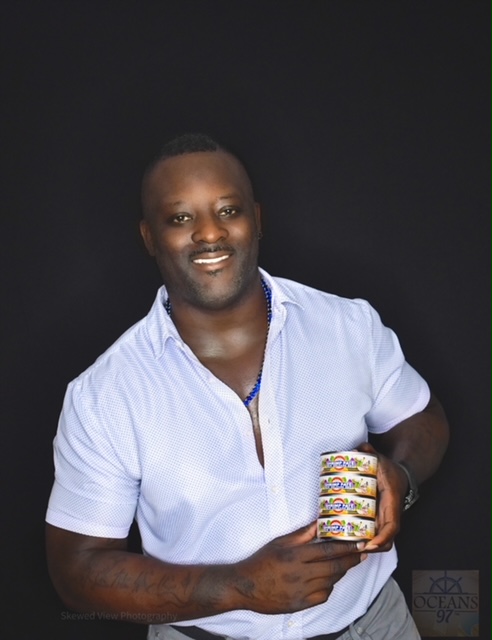
Former Patriots defensive end and 2x Super Bowl Champion Jarvis Green, with his canned shrimp pate. (photo courtesy of Jarvis Green)
Staying Green
After eight seasons with the Patriots and two Super Bowl rings, defensive end Jarvis Green is growing a business selling his superb canned shrimp pate in the New England region he loves. In the age of Covid-19, he’s managed to do pretty well meeting the needs for PPE too. BostonMan caught up with Green to talk about his football career, his successes in business, and being a part of the Patriots family.
Jarvis Green didn’t exactly part ways with Bill Belichick and the Patriots on the best of terms.
The two-time Super Bowl champion defensive end, who’d finished the 2009 season with 36 tackles and a sack, was offered a four-year extension from the Patriots. He turned it down.
The move is on his small list of regrets.
“I should have took it,” he reflects. “My sports agent, he got into it with Belichick. It was more or less, you know, you should fire your agent. I can’t get into details, but a lot of s*** happened between Belichick and Denver.”
You might not think it was the worst move on his part at the time. He was, after all, offered more money to go to Denver than many of us will make in our lifetimes. Denver isn’t an awful place to live in or to be a pro athlete. And he knew Broncos coach Josh McDaniels, the Pats’ former (and now current) offensive coordinator.
But Green, who is prone to using colorful language in an entertaining way, describes his short stint in Denver as a “s***show”.
It started out promising. After having stem cell work done on his deteriorating knee, he was having the training camp of his life.
“When I went in the off season, I was number one. When we used to practice these one-on-ones, I was the one who’d get the best guy on the Denver team. I get him lined up, I kill him! I remember calling Pepper Johnson, saying this is my best off season ever. I’m killing these guys. They can’t even keep up with me.
“I go in to training camp, I’m the sixth string D-line man. I’m like, what the hell just happened? But they knew. They saw my knee kind of tripping in film. They saw that I had something going on with my knee.”
Still, he was rightly displeased at a demotion without warning or explanation. “I got released the day before cut day. When I left, I didn’t say bye to anyone.”
After similar fruitless visits with the Browns and Texans…Green describes his three weeks in Texas as a vacation…he “limped out of the office” in Houston and retired.

Green lays a hit on Big Ben.
(photo courtesy of the New England Patriots)
Jarvis Green frequently gets asked who the leaders were in the locker room of those great Patriots teams. His answer makes clear what made Belichick’s Pats one of the great dynasties in professional sports: everyone.
“Everybody was leaders, man. I’ve been to Denver, I’ve been to Houston, everybody’s waiting for one guy to show up. In New England, we had everybody pushing, trying to get in front to say, who’s going to say this, or who’s going to do this, who’s going to make the play first.
“I remember when Junior Seau came in. It was so funny because he was a guy that wanted to be on top of the soap box and give out his three, four minutes, you know? I remember I could see the guys, we just kind of grin and give him his throne.
“That’s the type of tradition we had.”

Green can cook up some shrimp.
(photo courtesy of Jarvis Green)
Oceans 97’s Amazon entry for hickory smoked shrimp pate describes it as being keto-friendly, made with only natural ingredients, and a versatile product that can be eaten straight out of the can, or on vegetables or crackers.
There’s no mention of the dedication of Oceans 97’s founder, or a picture of his New England-famous face. You have to visit the website for that.
Being on a two-time championship squad may have pushed him to set a higher standard for himself. Maybe that’s how he stayed on that squad. But Jarvis Green is dedicated like that, and he proved it again in life after football.
He decided to go into the shrimping business as a favor to a friend. After buying a boat that he christened “Jenny”, he sang with the choir in church every weekend until a hurricane wiped out every boat but his.
Okay, that last paragraph is bunk, except for the bit about going into the shrimp business for a friend. Green is well aware of the parallels to Forrest Gump. Don’t call him Bubba. Like Forrest, Green knew nothing about the shrimp business.
Given his status as a Super Bowl champion, he could have simply lent his face, name, and uniform number to Oceans 97, the company he started.
But knowing that having his visage on a website wouldn’t improve the product’s taste, he dove deep and learned the business. The hard way. Green is a proud native of South Louisiana who knows the importance of quality food and its role in good times. He wanted his shrimp product to be the best it could be, because “people are going to create s*** all the time. It’s hard to sell s***.”
The two time champion multi-millionaire endured a six month internship in the world of shrimping. He even took on a broom and a mop in the factory. (Imagine handing a 6-foot-3, 285-pound defensive lineman a broom. Someone there has some brass ones.)
“We had a factory of like 90 people. I remember, I’m the tallest person looking across the factory. We’ve got about 50 people, peeling shrimp, eight hours, ten hours at a time. I was on that line, peeling and de-veining shrimp with my hand, and understanding that it’s a certain process, the way you procure the shrimp, you peel it, you rinse it, you freeze it, you package it. And it makes a difference, you know?
“That’s the biggest thing about having the right quality shrimp. It’s the supply chain.”
Oceans 97’s supply chain, Green confidently asserts, is “super tight”. He had landed multiple deals with local markets, and had several larger deals in place when a blasted virus changed the world. Green’s story is one of the lesser told stories about the impact of Covid…the devastating damage to businesses from lockdowns.
“I had got just approved with our Hong Kong market. Hong Kong Island, with a company called Food Wise and another 2,000-plus distributors of stores. I had that and I had another, and I’m working on some other more independent retailers in the South.
“I had that kind of set up and Covid hit. Can’t do demos anymore, Hong Kong canceled, corrections canceled, a few of the independent guys canceled because it’s a new product, right? They said we’re going to buy what we typically buy, buying a new product’s going to be kind of hard. You can’t do demos.”
Many established entrepreneurs could probably tell you a similar story. Not very many could say how they turned it all into a net gain.
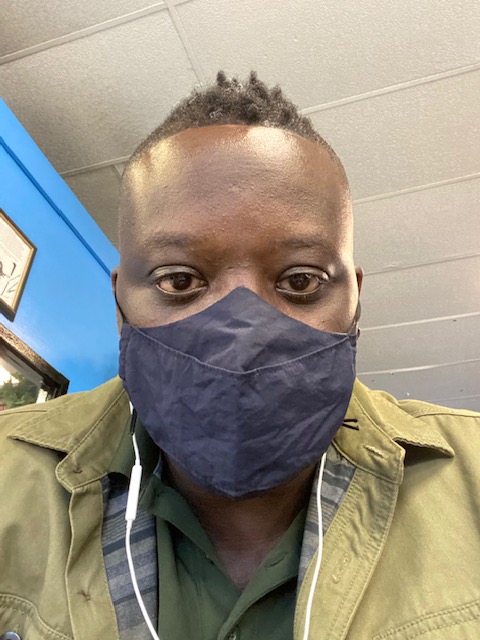
Helping you to stay safe.
(photo courtesy of Jarvis Green)
After a few of his ongoing deals fell through, including with a corrections facility in Louisiana where Green lives, he found himself in the “what now” state that so many entrepreneurs faced in 2020. That’s when the corrections facility he was working with asked him if he could supply hand sanitizer.
“Covid hit, locked down New Orleans, limit this, limit that, limit limit limit. I remember I wasn’t looking for this, but then my corrections guy was like, ‘Hey Jarvis, could you help me get some sanitizer, figure out how to get some sanitizer for the inmates?’
“I have no idea. I don’t know the first thing about sanitizer. I started doing research, calling some people. A friend of mine had another friend, he knew someone who had some spirits company in the mountain, west, whatever area. I helped my guy with some stuff in the corrections.
“I started looking into some stuff, and I won a bid with the state of Louisiana for sanitizer. I won some masks bids with Louisiana, and then I won a huge proposal deal with the Tennessee National Guard.
“I won the bids, made a ton of money. I made more money in those two months than I made with my shrimp business in the last five years. You can put that on paper. It’s just been crazy and I’m still doing that now.”
They may be wholly unrelated businesses, but Green credits his education in the shrimping business “big time” for his success in the world of PPE distribution.
“The biggest thing is about being patient and to find the deals, because every deal’s not for you. I’ve lost some great friends, because everybody’s playing octopus and has got ten different deals that they thought were real and weren’t real at all.
“I got my counsel involved, and I separated from all the different deals. I stopped dealing with all of these agents and buyers. We started working with the factories in China directly. The biggest thing right now is price gouging. The things we’re selling, we’re not price gouging, and we’re selling a competitive product through great sources.
“This is what I tell people. When I got into the shrimp business, it taught me how to understand international trade, international business. Dealing with different companies, dealing with banks, understanding LCs and different jargon, just to get business done abroad.”

Just as tough in a red shirt.
(photo courtesy of the New England Patriots)
Throughout his football career, Jarvis Green dealt with severely debilitating back pain. Even to this day, he says, he is strongly encouraged to have back surgery.
“My spine doctor, they call me twice a year. In 2014, they wanted to rush and give me surgery. They wanted to give me fusion, L3, L5 fusion, six points, all this bulls***.
“I didn’t want to do it, because my Dad had 17 back surgeries. He shakes like a leaf. He’s a veteran, he has a wheelchair. He has all kinds of s***, he broke his back with a job back in ‘79.
“My dad always said, I don’t care what you have to do. Don’t ever let anybody touch your back. Deal with the pain, it’s going to be much better than going through surgery because you’ll never be the same person again.”
Green deals with the pain, through highs and lows on the football field, in business, and in his personal life. Today, of all his considerable accomplishments, he is proudest that he’s still the same guy.
He unexpectedly learned that the local football team, with whom he went to the top of the mountain twice, felt the same way about him.
After some years of hard feelings, Green is currently an ambassador with the Patriots again, making appearances and occasionally going on trips with the club.
Mending the broken fences following his contentious departure, it turned out, wasn’t as difficult as he thought.
“It took three years for that to happen,” he says. “The Patriots were playing the Saints. Home game for the Patriots, right? I went to the game, I had the throwback jersey on, #97. I’m just a fan, I bought my ticket. I just went to the game, enjoyed myself and went home.
“So I’m thinking this just the way it is when you retire, they don’t give a s*** about anybody. That was my mentality, right?
“I’m in the stands, and they caught my picture on the Jumbotron when I was eating popcorn. Before that, I heard people behind me saying, why’s this guy got a Jarvis Green jersey on? They didn’t know who I was. After that, people come to me asking for autographs.
“I got a call from Pepper Johnson, or a text. He said, ‘Hey, what are you doing? You at the stadium?’ And then somebody said, hey, they want you to come down into the operations the next day.
“This is three years apart from the beef, you know, the Belichick situation, me and my sports agent, going to Denver, getting cut, all this s***. And I’m like nervous as hell. Won two Super Bowls with this team, now nervous as hell. I remember walking in and right when I walked in, I think I saw Tom first.
“I was there for like two and a half hours, just going through, saying hey to everybody. I remember talking to Josh in the cafeteria, just me and him at the table. Just saying, it’s business, things happen, back was against the wall, do what he had to do and pretty much a shake and a hug.
“It was very emotional, seeing all those guys. You know, eight years is a long time in the football world to be under one team, one organization. I appreciate Coach Belichick, to let me come in there.
“That’s kind of how everything got back. You know, they say, hey, you’re okay.”
In the interview for BostonMan, Green speaks slowest and pauses the most when speaking of his former coach’s words to him that day.
“Now this was the biggest part. After I was leaving, I’m walking out, drowning some of my tears. Belichick walks out, he says, ‘Hey Jarvis, remember, you’re always gonna be family here. You were a part of all of this.’
“He said, ‘Never be a stranger. You’re family.’”
Did this post about Jarvis Green make your day a little bit?
I hope so. If it did, I would really appreciate your support.
When you use this link to shop on Amazon, you’ll help subsidize this great website…at no extra charge to you.
Thanks very much…come back soon!
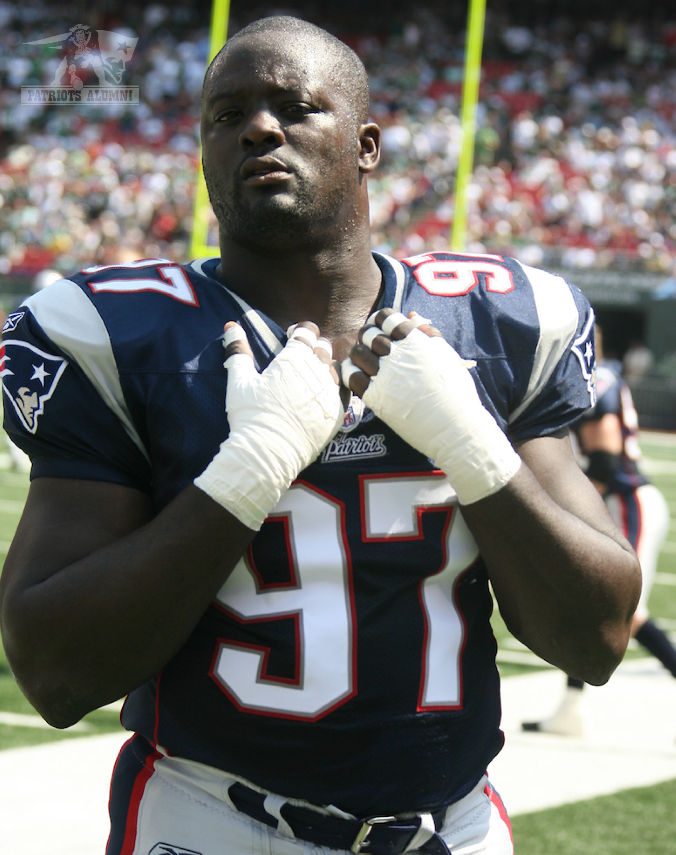
A part of Super Bowl history.
(photo courtesy of the New England Patriots)
Jarvis Green on The Helmet Catch Play
You probably remember the Pats’ undefeated season of 2007. You may remember Jarvis Green on that invincible squad. You might have to read his Wikipedia entry, though, to know that he was one of several Patriots who had Eli Manning in his grasp on the “Helmet Catch” play in Super Bowl XLII. Green nearly tore off Manning’s jersey, but the Giant QB got away and fired a Hail Mary pass to David Tyree. You know the rest.
It was hardly the ground ball dribbling through Buckner’s legs, or the 7-20 September collapse of 2011. The New England sports fan faithful have dealt with far worse as season ending falters go. Even Manning called it “the luckiest play in NFL history”, joking that it went exactly how they scripted it in practices.
Green doesn’t think about it much these days. But it did cost him sleep for a couple of weeks. Because leading up to that play, he’d played a hell of a game.
“It could have probably changed my life. I’m like, it was like third and seven, I should have been the guy saying ‘I’m going to Disney World!’ You know, because I remember that game, I had a sack and maybe seven tackles or five tackles. That would have ended the game, that would have been icing on the cake.
“I think for the guys who really played, it’s not something that we really talked about at the time, it’s more friends because the family don’t bring it up. It’s more the friends, you know, everybody wants to get a one-up on you.
“So it’s always comedy time, you know, for everyone except me.”
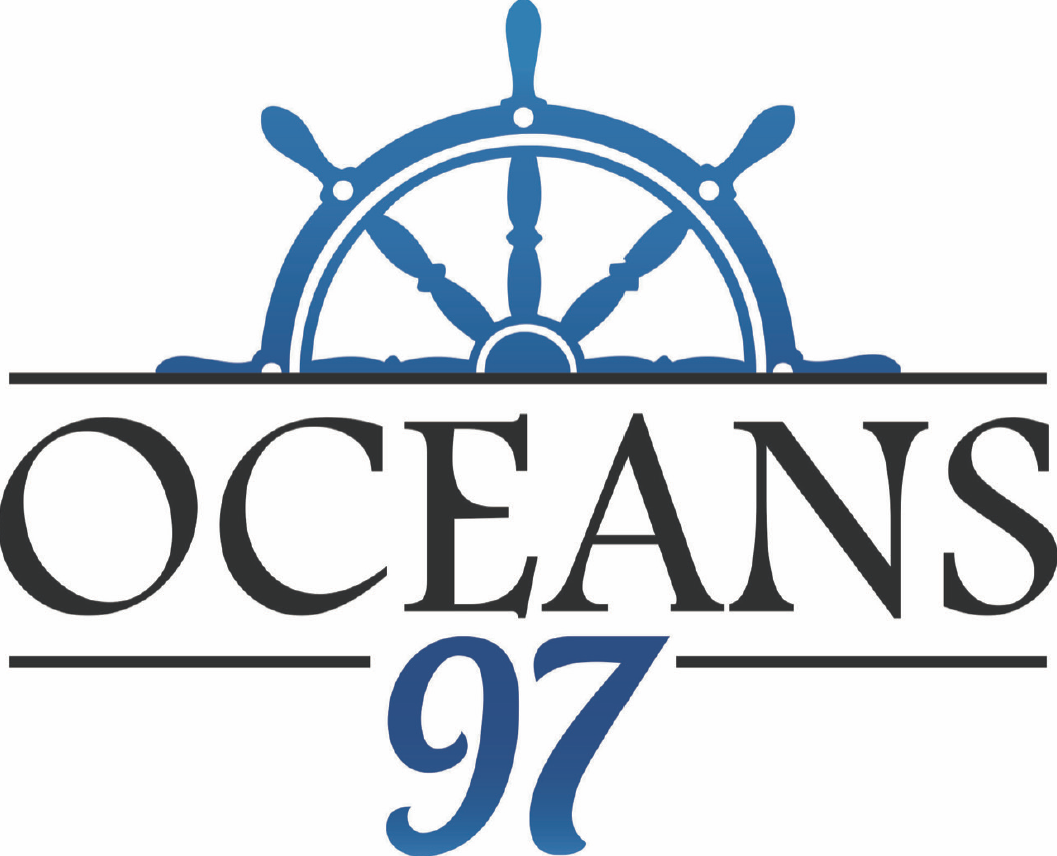
Oceans 97, with first class shrimp pate.
(image courtesy of Jarvis Green)
Canned Shrimp Pate – From A Man Who Knows Shrimp
BostonMan is hoping that Jarvis Green can make it to a future Legacy Club gathering, because his Oceans 97 shrimp pate will be a great addition to the already excellent finger foods usually available at our events.
But for now, you can find it in 150 specialty retailers, strategic restaurant partners and on Amazon.
Green’s canned shrimp pate is available in five varieties: Hickory Smoked, Creamy Lemon, Shrimp Rillettes, New Orleans BBQ, and Jalapeno Chili. On the Oceans 97 website, there’s a brief description of each flavor…for Creamy Lemon, it explains the presence of vinegar:
“It is the Gem that interacts with shrimp protein, water and milk. It also alters the texture and consistency making the Creamy Lemon Paté unique from the other flavors. Vinegar is a tenderizer.”
Spoken like a football great who knows his food. And he does. Green also offers several recipes on the website that make the best use of the shrimp pate, including a corn bread recipe that includes a can of the New Orleans BBQ edition. Just the pictures of the corn bread may make you start planning your next dinner gathering.
The website is www.ocean97.com.

Making food on date night better.
(image courtesy of Jarvis Green)
Bringing The Chefs To You
Food delivery has become enormously popular. Restaurant chains have focused on apps to help customers continue to enjoy their eats, through pickup or delivery.
There’s just one problem, as Jarvis Green points out.
“Everybody knows the menu of Burger King, McDonald’s, Chipotle, Domino’s Pizza. That gets old.”
Great point. It might be nice to be able to find chefs in the area, and enjoy a decent meal for a change.
Green and his partner, Eddie Rhodman Jr. of Rhodman Enterprises, are part of a team producing a new app that does just that. With Chef2U, you can find a local chef to make an amazing meal for you, delivered to your home.
“If you’re tired of eating Big Macs and Little Caesars, you could go in and see the chefs in your area. It’s like an eight to ten mile radius. Then if you want like Mediterranean food, that’s going to pop up, but it will be the chef’s face. It won’t be the name of the local restaurant, but his face.”
It also offers chefs a much-needed chance to supplement their incomes.
“The app has food trucks, bartenders, baristas, chefs, catering, meal prep, and instant meals. It’s very detailed. There’s so many opportunities to get private chefs back into and create diversity in this industry.”
Green expects Chef2U to outlast the pandemic.
“This is built to stay, because again, we will not be competing with traditional fast food chains. We’re going to be giving all those chefs, entrepreneurs, restaurateurs, a chance to make money on the side.”
Rhodman adds that Chef2U gives aspiring chefs “the opportunity to create their own brand, their own customer base, because they haven’t been given the opportunity. It will give them the freedom to expand their brand and have the unique luxury to deliver their personal chef experience directly to a customer’s home.”
Jarvis Green and Eddie Rhodman expect Chef2U to be available in April. If you have favorite Beantown chefs, make a note to get the app. It’ll make for a great date night or family night.

The Red Sox Fan’s Guide to Camden Yards
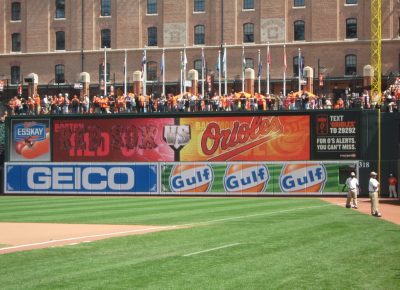
This article was published in the Spring 2019 issue of BostonMan magazine. Click here to read it on their website, or click here to see the PDF edition from the magazine itself. Hope you enjoy it.
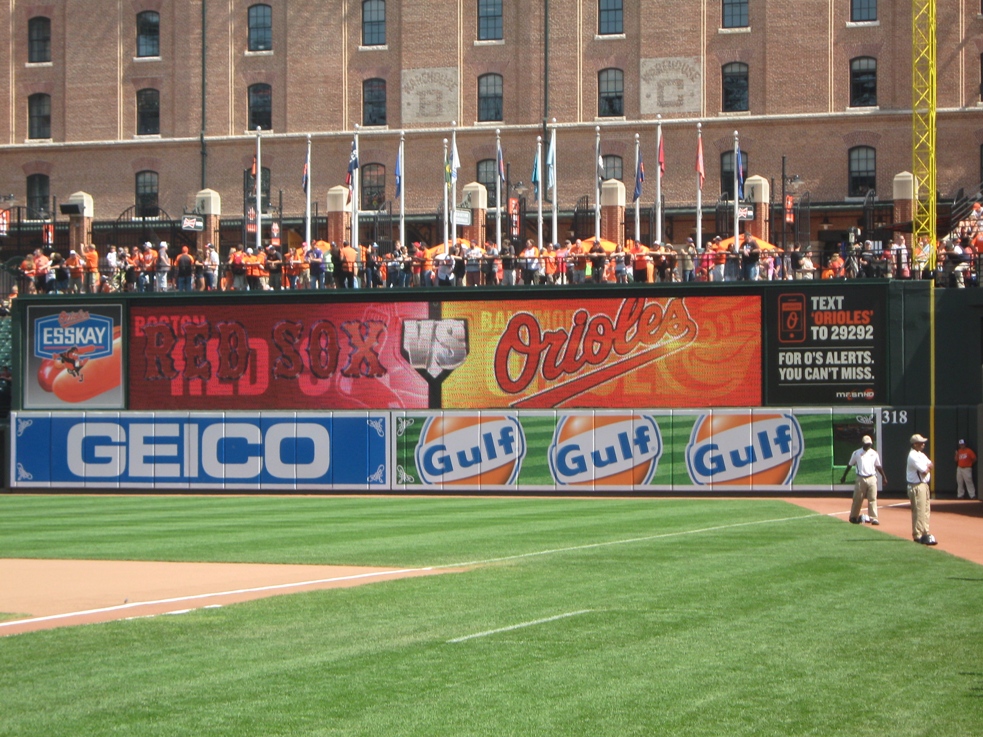
It’s not that the Boston nine haven’t enjoyed considerable glory since, but the last day of the 2011 season was a tough one to swallow.
On September 28 of that year, Oriole Park at Camden Yards showcased the climax of an epic Red Sox collapse. It was a season when the Sox were expected to run away with the AL East, steamroll through the playoffs and win their third World Series in eight years. When the dust cleared in Baltimore, a 7-20 September crumbling saw the team missing October and letting go of a manager who ranks among the biggest titans in Boston sports history.
Game 162 in 2011 may have been a delight for baseball fans just about everywhere else in the country, but it was momentously awful for Boston fans, most of whom had endured enough frowning from the Baseball Gods for one lifetime.
But if the last few paragraphs were tough for you to read, maybe you can take some comfort in the Baltimore faithful having something to cheer about, in what continues to be a nightmarish era for them.
The revolutionary home of baseball in Baltimore is currently…and probably will be for at least another three to four years…the oldest in major league baseball to have never hosted a World Series. This is, for forty-something and older Orioles fans, something impossible to have conceived in the days of Palmer, Robinson, Murray, the young Ripken, and master button-pusher Earl Weaver.
The younger Orioles fan base…true loyalists who cannot fathom the concept of their team being competitive every season…has understandable antipathy for Red Sox fans that often take over their ballpark, especially in lean years. That’s to say nothing of their exasperation at having to pay more for tickets for games against the Sox and Yankees.
So pull for the Red Sox like a good traveling fan. But at least let the locals know how great their ballpark is. They don’t have much else these days.
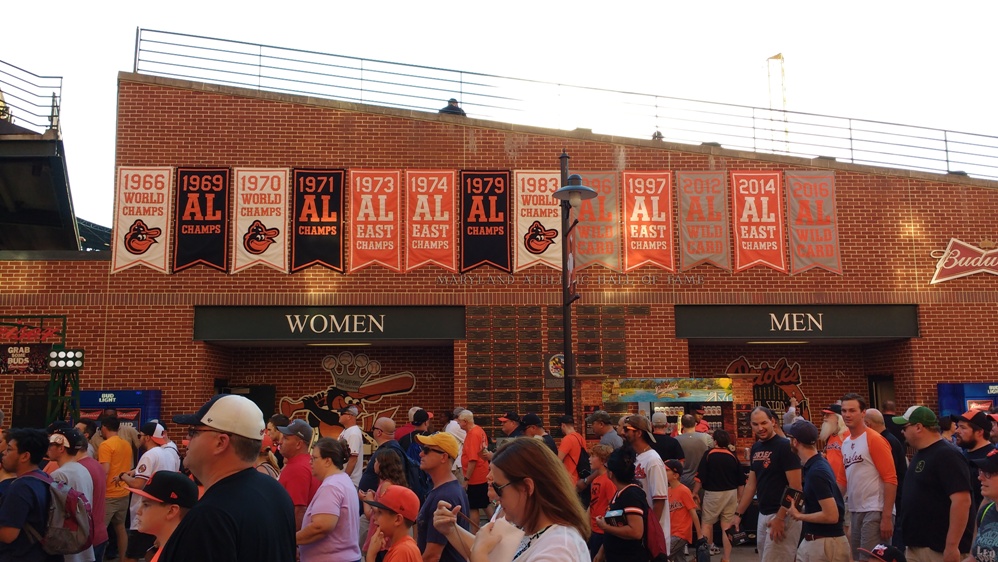
Yes, I keep telling people they were really good once.
Following a 115-loss season and a full commitment to a long overdue rebuild, the Birds aren’t likely to fill up Oriole Park very often in 2019. Not even for Red Sox games.
So now is the time to take advantage and visit a beautiful ballpark where you could experience some reverse sticker shock after years of attending games at Fenway. Even to see the Sox in a venue where you’ll be surrounded by your fellow Sox loving brethren, Camden Yards is a far less expensive outing…tickets for even the best seats will probably cost about a third of equivalent seats in Boston, great parking spots can be had for a double sawbuck or less, and even the food…well, okay, the food is still priced at a ballpark level. But you’ll have money left over for it after you park.
If you’re planning a weekend game in the summer months, it’s probably best to get your pasteboards in advance…not because they’re likely to sell out, but because you’ll have more choices. There will likely be a third party markup for weekend games, and the Orioles website allows you to actually pick individual seats. But during the week, try the box office at the north end of the B&O warehouse…you should still have plenty of seats to choose from, and you’ll save a chunk of change in online fees.

When your seat is half as comfortable as in the movie theater, you know you’ve made it.
Camden is one of those ballparks where fans say there aren’t any bad seats, which is true, but that doesn’t mean some aren’t better than others. If you’re splurging for those cushioned premium lower seats (and you should), the visitors’ dugout is on the third base side. As is the straight ahead view of the impressive warehouse, Oriole Park’s signature feature.
But while the lower concourse features great Baltimore-friendly eats like crab cakes, you’ll also be as far as possible from Eutaw Street. So if you go this route, show up early and get your Eutaw stroll in to see the plates commemorating home runs that landed there, including two from David Ortiz. It’s an essential in any Camden visit…along with your handshake and pit beef from Boog. Or your Rain Delay IPA at Dempsey’s, if you remember the former O’s catcher’s rain delay antics at Fenway.
If your budget is limited, upper level seats at Oriole Park work just fine. They’re closer to the field than in most ballparks, and are cheap even by baseball standards. (Bonus tip: the Orioles offer two free kids’ tickets with every adult ticket purchase.) You’ll have an outstanding panoramic view of both the field and the warehouse blending in with the Baltimore skyline, and the upper concourse features a fine view of the brick structure of downtown Baltimore in every direction, including M&T Bank Stadium (Ravens) across the street.
The Eutaw Street bleachers in center field…especially now that they’ve added a sit down bar there…are a popular spot for visiting fans too. But should you catch an Orioles home run ball, don’t throw it back. That happened in a game in 2011. I’m not saying the Baseball Gods punished the Sox for that behavior, but I’m not saying they didn’t either.

The Eutaw Street view of the Hilton.
With Baltimore being 400 miles from Boston, you’ll probably be spending at least one night in town. There are plenty of upscale hotels in downtown Baltimore, including the impressive Hilton across the street from the Yard. Just know that unless you’re staying at the Hilton or another hotel just a few footsteps away, you might not be comfortable walking to the ballpark, especially at night.
This is probably of no nevermind, since you have a plethora of parking options for Orioles games, from Orioles’ lots east of the ballpark to surrounding garages downtown. None of the lots and garages in Baltimore are gouging in price the way you’re used to at Fenway, but you will likely find a better deal near M&T Bank Stadium, especially if you don’t mind walking a bit. Parking east of the ballpark also makes for a much easier in and out.
If you’re not staying downtown, you also have the inexpensive and convenient Light Rail option…park for free along the route, and take the streetcar right to the entrance of the ballpark. It’s not just a good deal cheaper, it spares you the considerable headache of driving in downtown Baltimore, where red light duration can be measured in eons and could even cost you an inning of baseball. You can also take the Light Rail directly from Penn Station, should you be using Amtrak.

This is what makes Baltimore baseball great.
Fenway Park features lobster poutine, lobster rolls, and lobster melts. Oriole Park has crab cakes, crab kettle chips, and crab waffle fries. Not a big adjustment for Massachusetts natives.
Yes, people rave about Boog’s BBQ here and rightly so. Just know that Boog’s amazing pit beef and turkey sandwiches aren’t your only option. In the lower level concourse, you can find a baseball-sized crab cake (the Orioles tried about 50 recipes before hitting on the right one for it), kettle chips with crab meat piled on, or crab dip waffle fries that are worth grabbing a fork and sitting down to eat. And pile on some Old Bay at the condiment stands.
It’s all great for a taste of Maryland, but don’t forget about the eats and libations outside the ballpark too, especially across Washington Boulevard from the Left Field Gate. The pre-game watering hole tandem of Pickles Pub, Slider’s and the Bullpen all offer dogs, sausages, burgers, and yes, crab cake sandwiches at prices much cheaper than inside. You can wrap this stuff and bring it in, incidentally. And like inside the ballpark, there will be enough Red Sox fans at the pre-game party that have your back. (Not that O’s fans will give you any trouble.)
Speaking of libations…the establishments across the street continue to offer a brew that the Orioles amazingly do not sell inside the ballpark…National Bohemian, affectionately known as Natty Boh. How vital is the one-eyed Natty Boh logo to the Baltimore baseball experience? When this team was consistently good (yes, they really were once), it was the brand sold at Memorial Stadium…because the owner of the team happened to be the owner of National Bohemian.
You’d think the Orioles would respect that. Maybe someday. But for now get your Natty Boh on across the street and salute the…wait for it…“once proud Orioles franchise”.

The Birds’ two biggest fans.
One of the multitude of features the designers of Camden Yards got right was its location…in the heart of downtown Baltimore, just steps away from the beautiful Inner Harbor. Out of town visitors can enjoy a ballgame, a delightful pre- or post-game meal, and visit the top tourist attraction in the city in one day.
If you haven’t yet crossed a Red Sox game at Oriole Park off your bucket list, 2019 is the year to do it.
A Name You Should Know
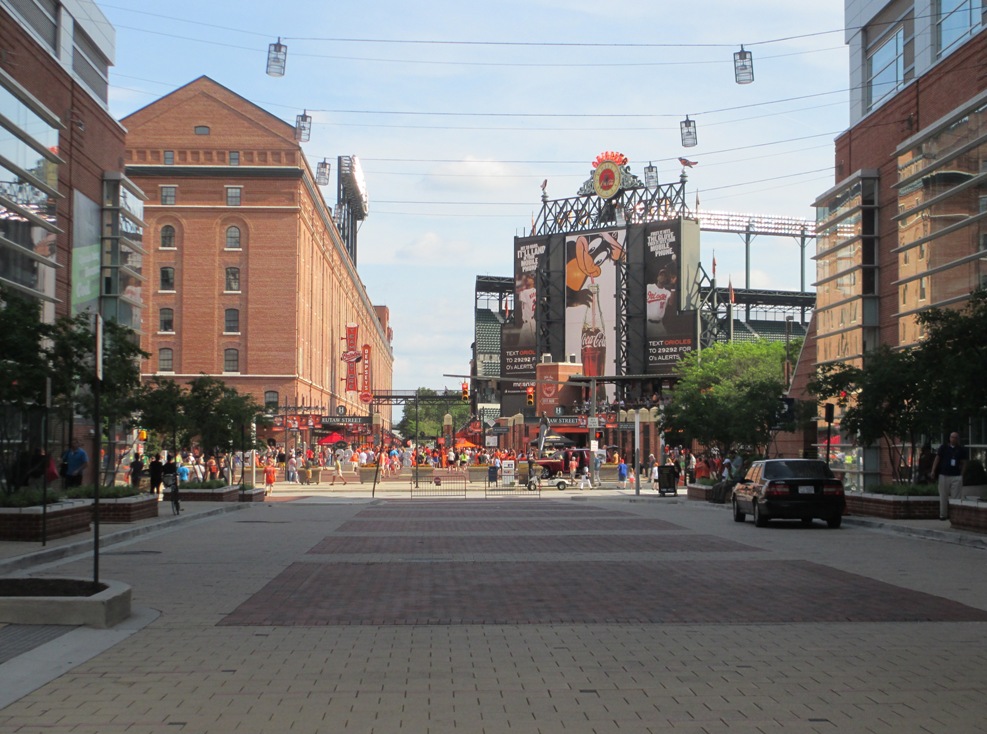
It’s the warehouse. Chicks dig the warehouse.
On the website “This Great Game: The Online Book of Baseball History”, former commissioner Bud Selig is quoted as saying that Baltimore’s revolutionary ballpark “may be one of the two or three most powerful events in baseball history. It changed everything. It really did. I’m not sure people grasp the significance of it.”
Selig is probably correct. Yet it’s doubtful that it would have been the case without the prominence of the B&O Warehouse, however impressive a new ballpark otherwise might have been. The Warehouse gave Camden Yards a striking, standout visual element that was comparable to Fenway’s Green Monster. It made a great venue into a phenomenal one.
Yet the man arguably most responsible for its preservation never received any official credit.
Eric Moss was an architecture student at Syracuse University who spent a year developing a model for Baltimore’s ballpark that included the long, bulky, old brick structure…his design even featured the Warehouse as part of the playing field, suggesting that the Orioles would have to budget for window repairs.
His design was seen by one of the firms competing for the Oriole Park contract, Ayers Saint Gross. The firm actually brought Moss and his design to Baltimore. At the time, the warehouse was set to be demolished, an idea that had the backing of even the Orioles. Moss’s design showed how the building could not only be preserved, but also be an integral component of the ballpark itself.
Moss’s idea to build the ballpark around the warehouse survived…but Ayers Saint Gross lost the contract bid to HOK Sport, who ultimately designed not just Camden Yards, but dozens more sports venues in the wake of Camden’s success.
Eric Moss’s name is not on any of the official design documents. But he landed a nice career out of it. He is still today an architect at Ayers Saint Gross.
One Year To The Day
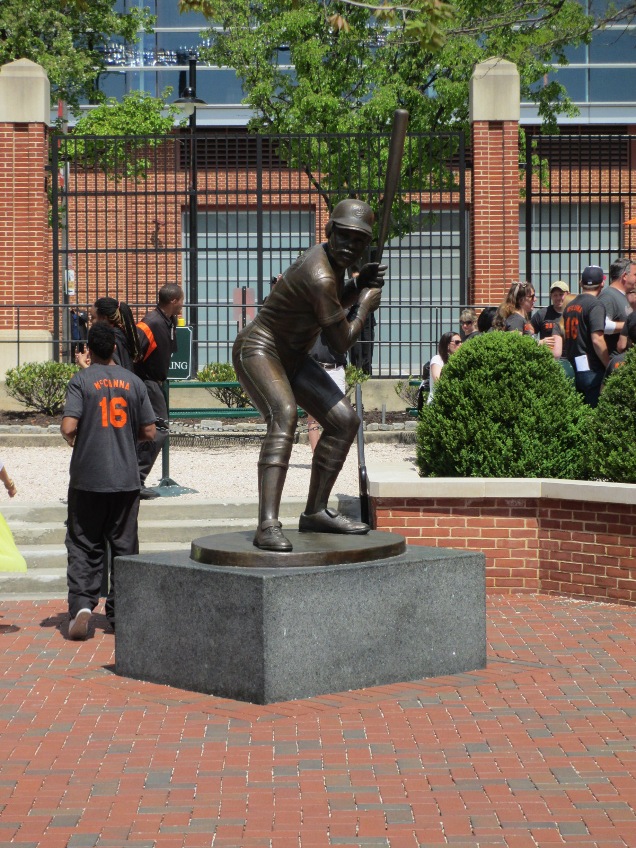
Damn, this guy could hit.
Every baseball fan remembers what happened at Camden Yards on September 6, 1995. Cal Ripken Jr. took the field for the 2,131st consecutive time, and single-handedly restored a country’s love for a sport that had been badly damaged by its participants’ greed. As the ballpark’s history goes, it’s not likely that anything short of an Orioles World Series victory could top the moment.
One year to the day later, longtime Orioles star Eddie Murray made September 6 extra special for Orioles fans, launching a home run into the center field seats following a rain delay that caused the early exit of several thousand fans. This wasn’t just any home run, by the way…it was number 500 of Murray’s storied career. He would finish with 504.
Murray and Ripken were arguably the two key members of the last Orioles team to reach the top of the baseball mountain. Both of them were relatively young stars in 1983, the year the Orioles took the crown against the Phillies. The two teammates and friends battled for the MVP all season, with Ripken taking the honors and Murray finishing a very strong second. (Carlton Fisk finished a distant third.) Neither would play for a World Series winner again in their careers.
Ripken credited Murray as one of the reasons he played in every single game for over 16 years. It was Murray, he said, that stressed to a young Ripken the importance of always being ready to play.
Today both players have statues and retired numbers 8 and 33 at Camden Yards, immortalizing their careers with the Birds…and the seat where Murray’s 500th home run landed is now painted orange to commemorate the occasion.
The Peanut Church

Peanut bags – keeping churches maintained since 1992.
(photo courtesy of the Old Otterbein United Methodist Church)
As stated in this article, you can bring food and non-alcoholic drinks into Camden Yards. This lenient policy of the Orioles has been a great boon to nearby people of faith.
The Old Otterbein United Methodist Church, located near Conway Street adjacent to the ballpark, discovered in the early days of the new ballpark that Orioles fans would be happy to pay a dollar for a bag of peanuts rather than quadruple that price inside.
They’ve been selling peanuts to fans heading to Orioles games since the ballpark opened in 1992…and they’ve used the proceeds from peanuts and water sales to restore an organ, replace the roof, fix crumbling brick walls and repair the electrical and HVAC systems.
According to the church’s website, “The best sales are always when the ‘Yanks’ and ‘Red Sox’ are in town.” So when you buy peanuts from the Old Otterbein, you’re not only saving money on everyone’s favorite ballpark snack, you’re helping a local house of worship maintain their home.
So there are some Baltimore natives that always will be happy to see you, even if you’re wearing Red Sox gear.

The Hard Is What Makes It Great – Fenway Park
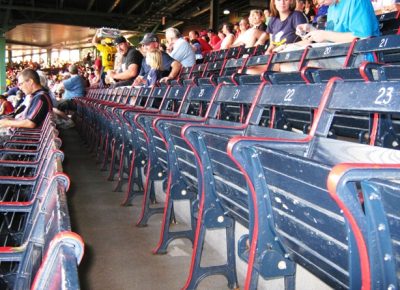
It was a great privilege to contribute this piece about one of my favorite ballparks to the debut issue of BostonMan Magazine, which was released in the fall of 2018. You can read the article on BostonMan’s website, or click here to see the PDF from the magazine.
It wasn’t easy to conceive an angle about Fenway that would be new to Boston sports fans, but every Red Sox fan that read it loved it, which made me very happy. I hope you enjoy it.

Baseball As It Is Meant To Be Watched.
“The Hard Is What Makes It Great.”
The venerable home of the Red Sox has survived not only a relentless ballpark boom, but a new wave of disregard even for relatively new venues. There’s a reason for it that few people outside of Boston understand.
By the time you read this, there may be another World Series about to take place in the ballpark that has sat in Beantown for over a century. The Red Sox have, after all, shown a palpable disregard for supposed curses in the last decade and a half.
When you think about it, it’s no small miracle that Fenway Park is still standing. Lately, you don’t even have to think about it all that much. As ballpark architecture changes at a dizzying rate, Fenway insistently puts its foot down, asserting its unassailable right to continue hosting the world’s greatest game. It remains the immovable object that triumphs over the irresistible force.
Over the last three decades, as municipalities and teams realized there were billions to be made in corporate suites, some romantic and profoundly historic temples of baseball met with the wrecking ball. Most distressingly, even Tiger Stadium, old Yankee Stadium and Comiskey Park were unceremoniously felled by baseball economics. It’s hard to imagine it now, but there indeed was a time when Fenway was in the crosshairs too…and the idea of replacing it had plenty of support.

Turner Field in Atlanta. Great ballpark, but you didn’t have long to knock it off your list.
In recent years, the discarding of venues considered shiny by Fenway standards makes it even more remarkable that the ballpark continues to defy its demolition. Teams are now departing from delightful and appealing baseball homes that most fans remember opening. Turner Field in Atlanta lasted just 20 seasons as the home of the Braves, magnificent Globe Life Park in Arlington will be replaced in 2020 after just 26 seasons, and the Diamondbacks have begun the process of exiting Chase Field in Phoenix, another ballpark just 20 seasons old.
Think about that. The Metrodome outlived these outstanding ballparks.
The sports venue boom, one could easily argue, is now completely out of control. For absurd reasons, at least the publicly stated ones, teams are tossing aside perfectly nice baseball settings. The Braves actually cited “traffic” as a problem with Turner Field, as if it’s somehow possible to smoothly shoehorn 20,000 cars into any parking lot on earth in the space of a couple of hours. (Spoiler alert: the traffic at SunTrust Park is far worse. At least Turner Field had a viable public transit option.)
It’s not all that difficult anymore to conceive that Oriole Park at Camden Yards, the venue that started all of this, could itself be threatened with extinction in the not too distant future. As perfect for baseball as Camden is, the Orioles can’t even give away tickets these days…and they’re literally doing just that.
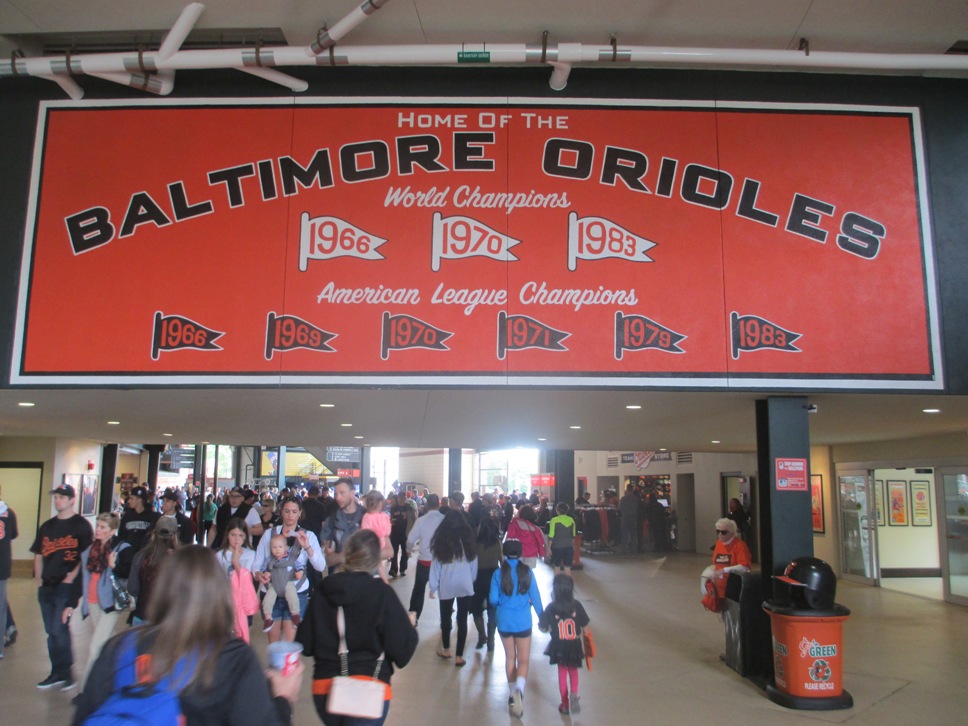
Sure, they haven’t been in the Series since the Reagan Administration. But they revolutionized ballparks at least.
The stunning ballpark creations that arose in response to the phenomenal success of the architectural wonder in Baltimore have been warmly received by spectators. This is especially true in places like Philadelphia, where fans sat in a concrete donut designed for football for 33 seasons. Citizens Bank Park is, by any fathomable measure, a superior venue to Veterans Stadium.
Many of the new ballparks were designed with the charm, or more correctly, the “old time features” of places like Fenway, like neighborhood-necessitated dimensions and distinctive visual landmarks…but without the small seats, grossly insufficient leg room (did people really top out at five-foot-four in 1912?), obstructed views, and fuming in 3 MPH traffic to find exorbitantly priced parking.
With all due respect to Camden Yards, which truly was executed flawlessly, the modern amenities babble is exactly where all of the new venues miss the point.
The home of the Red Sox was never meant to be a place where millennials gather for craft beer tasting, or where patrons sample gourmet sushi from an executive chef, or where fans loudly cheer a mascot race. It’s not that Fenway doesn’t have extras geared to folks that are less than fanatical about baseball. It does. But they’re not emphasized here. There is nowhere near the outreach to “casual fans” at Fenway like there is in nearly every other ballpark in America.
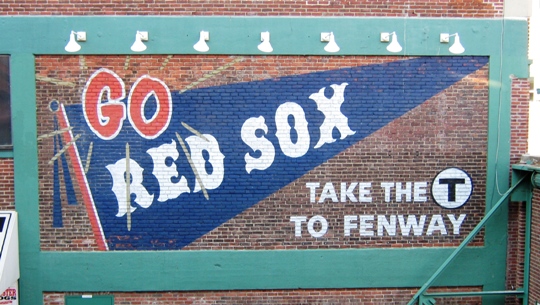
Yes, believe it or not, that packed to the gills train you were just on is the easiest way to get here.
Fenway Park is difficult. It’s the most challenging ballpark in baseball, both to get into and to get to. Most games sell out and require fans to pay an overinflated secondary market rate, seek out skilled haggler scalpers or wait in a long line on game day. Parking is scarce and costly, with cars even placed on top of one another in smaller garages. Trains leading to Kenmore station are stuffed well beyond capacity with sweaty fans.
Choosing the wrong seat at Fenway can lead to the annoying experience of a support pole blocking a portion of the field from view. A fan’s only alternative, at least at that price, is a distant outfield seat in the glaring sun. Oh, and those Grandstand seats? Flimsy wooden chairs, just 15 inches wide, with an inch wide armrest to share with your neighbor. You must be kidding.
For all of the reverence for Fenway Park from baseball fans everywhere, no one would tolerate a newer facility with so many ridiculous flaws. Yet that grand old girl in Boston with the huge green wall in left field remains at the top of so many fans’ bucket list destinations. A ballpark that, on fan experience alone, is utterly inferior to nearly every other venue in professional baseball is filled to capacity every night.
Not even the strikingly beautiful structures in Pittsburgh and San Francisco could ever hope to achieve that. It’s a charm that a less dedicated baseball fan, accustomed to cushioned seats and easy parking, would consider a detriment.
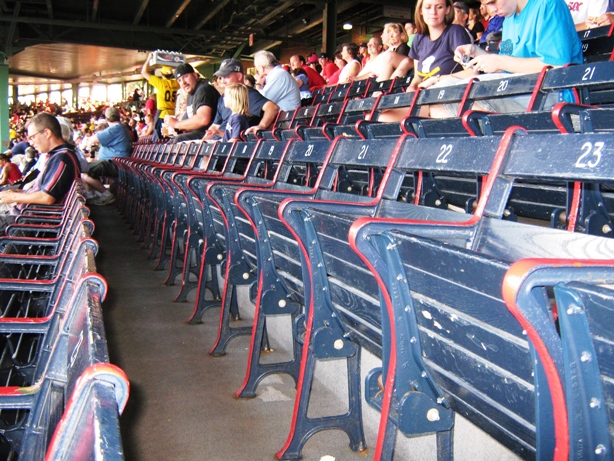
An atmosphere where everyone’s your amigo!
In A League Of Their Own, Tom Hanks has the perfect response to Geena Davis finally succumbing to how difficult the game of baseball is: “It’s supposed to be hard. If it wasn’t hard everyone would do it. The hard is what makes it great.”
This place isn’t for amateurs. Fenway Park is literally designed to weed out the casual fan. If you don’t love Red Sox baseball enough to endure that cramped, stiff seat with no view of right field, you don’t have to go. Not to worry. Someone will take your place…and that someone is exactly the kind of fan baseball needs more of anyway.
Why else on earth would fans tolerate extortionately priced tickets and parking, uncomfortable seats with blocked views, and far too many outfield seats in 2018? Why do Red Sox fans not only put up with all of this, but even sing collectively and enthusiastically about how good times never seemed so good?
Because Red Sox fans get baseball.
They get the incomparable thrill of investing their heart in a baseball team, and seeing a game winning hit bounce off of that green wall.
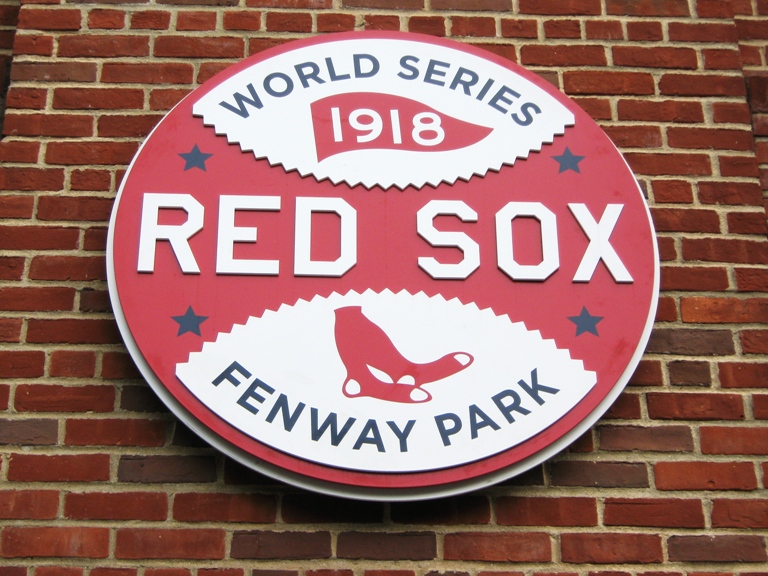
No problem, we’ll wait.
Maybe that simplifies it too much. Try this.
See if you can find someone who was there to witness Ted Williams’ 502-foot smash that landed in a seat now painted red to commemorate the occasion. Actually, that might be difficult, given that it happened in 1946. Maybe you’d have better luck finding someone who was in the ballpark when Carlton Fisk’s home run ball clanged off of the foul pole. That was only in 1975.
Still having trouble? Then try finding someone who was present when Big Papi’s game winner cleared the fence in the 12th, after journeyman first baseman Kevin Millar had duly warned everyone against allowing a Red Sox victory that night. That shouldn’t be impossible.
Found someone? Great. Ask them how much they paid for their ticket, or where they parked, or what the entertainment was between innings.
Chances are good the answers won’t be high on the list of what they remember most about the experience.
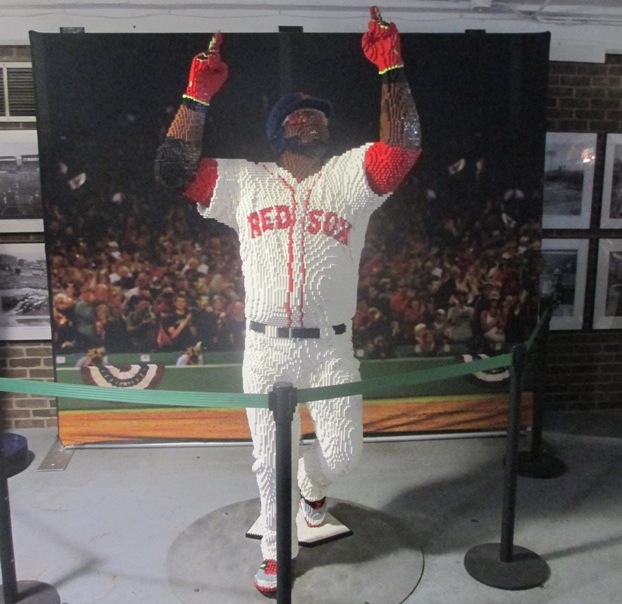
When they make a Lego figure of you, you’ve done ok.
Baseball’s history is a long, ongoing, and endlessly gripping page turner full of otherworldly moments. Nowhere is this more true than in Boston, from the devastating heartbreaks of an 86-year hex to the beyond spectacular glory of 2004. As Big Papi’s hit sailed over the fence and the Sox escaped the jaws of elimination, setting in motion the greatest comeback in sports history, no one in a partially obstructed seat that night would have traded the inconvenience to have missed it.
The Sox fans that overcame the considerable challenges to be inside Fenway Park on those fateful historic days considered it unquestionably worth the aggravation. Just as they continue to do by the millions every summer.
All the obstructions, expensive parking, crowded trains, and no great need for any ballgame sustenance other than a hot dog on mushy white bread. It all makes the point that no retractable roof, amenity-laden facility for baseball could ever make. For all of its flaws, because of its flaws, Fenway Park is absolutely everything a ballpark should be.
An eternal reminder that baseball, Red Sox baseball, is worth it.
Did this post make your day a little bit?
I hope so. If it did, I would really appreciate your support.
When you use this link to shop on Amazon, you’ll help subsidize this great website…at no extra charge to you.
Thanks very much…come back soon!

“Hey, I can’t see the guy in front of me!”
You CAN Avoid (Or At Least Minimize) The Obstructed View
Just because the support poles and their obstructed views keep out less dedicated fans doesn’t mean you have to endure them. There is actually a website called “Precise Seating” dedicated to providing the lowdown on every single seat in Fenway Park. It’s a fantastic resource for Sox fans.
With Precise Seating, you can put in all the information about a seat…section, row, and seat number…and the website will give the seat a 1-10 rating based on various factors: the view, distance from home plate and from the field, even shelter from rain. If there is an obstruction, the site will tell you what percentage of the field is blocked and whether you’ll be unable to see any of the bases or pitcher’s mound.
For example, say you’re looking at Grandstand Section 15, Row 5, Seat 1. Precise Seating will show you the obstruction, and how you won’t be able to see first or second base. They feature an actual photo from the seat, and being five rows from the pole it’s not too terribly bad, but if you have other choices you may want to look for another spot.
Precise Seating is a valuable tool, especially when searching around low numbered rows in the Grandstand. But if you don’t have access to it…say, when you’re patronizing a scalper…just remember a few things:
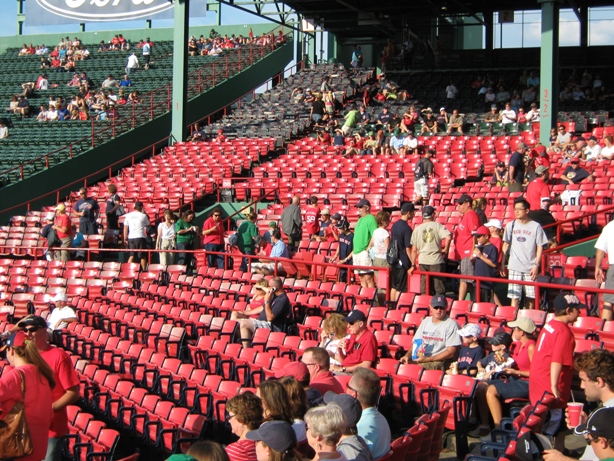
Or you could just sit in front of the poles.
Low rows in the Grandstand are the biggest risk, since the support pole is usually along the first or second row. If you’re going to try it, go for a seat number between 5-12, where you could not only be safe but you may land a great seat for the price. If you’re in a higher row, in most cases the obstruction isn’t too bad if you’re between seats 5-10.
Also, keep in mind that there are support poles in the high rows too, usually in Row 18 or 19. If you go for a seat this high, again, avoid low or high numbered seats. You won’t be able to see scoreboard this high up, incidentally, but there are TVs showing replays of the action.
One last thing: there are no support poles blocking views in Sections 19 and 21, on either side of home plate. Check those first!
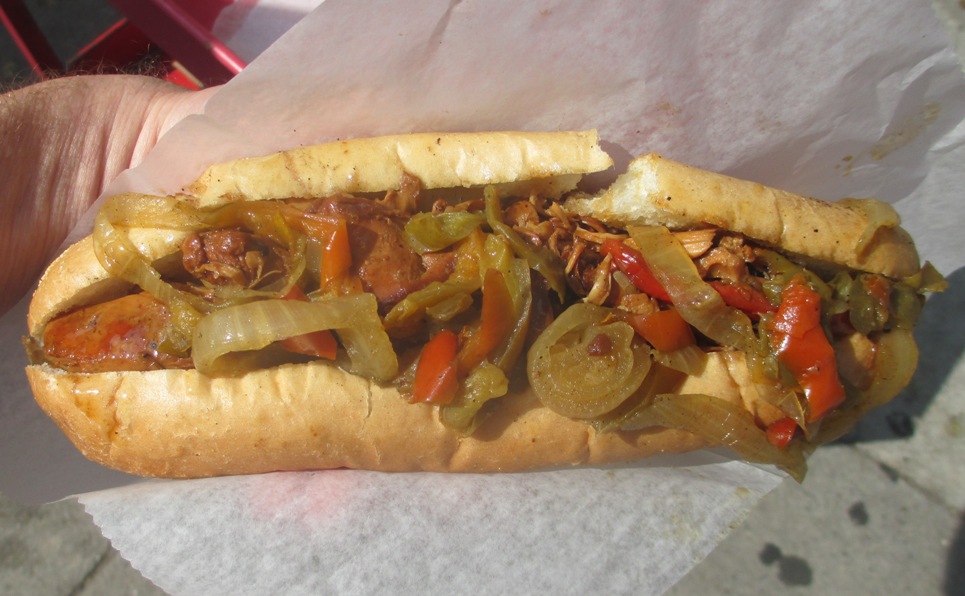
A feast for the eyes at the ballpark. For less!
The Lansdowne Street Sausages
Part of the classic charm of Fenway Park is the sausage hawkers that surround the place…fans can get a decent sized tube of meat on a submarine roll for a few bucks less than what it would cost inside the park. You are indeed allowed to wrap them up and bring them into the game, if you can find some way to keep them warm while waiting in line.
Since most fans arrive at the ballpark from the Kenmore T station, the sausage vendors on Lansdowne Street are the most popular, being the first to emerge into view. They look similar, but there are differences between them. Here are a few fan favorites and what makes them special:
The Sausage Guy – Near the entrance to Cask ’N Flagon tavern is a small blue kiosk run by a gentleman named David Littlefield. The Sausage Guy’s website (yes, he has one) lists some of his stats: two frostbitten fingers from serving in the cold, a torn rotator cuff and three cortisone shots to his left elbow.
The Sausage Guy serves up good-sized sweet Italian sausage sandwiches with onions and peppers. It’s a pretty decent value and you can order the sausage on the website.
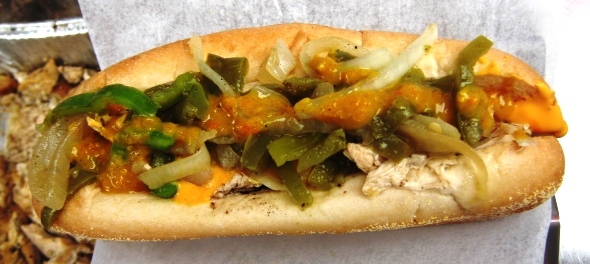
A chicken teriyaki from the Sausage Connection, with “Inner Beauty” hot sauce. Trust me on this one.
The Sausage Connection – The Sausage Connection is the yellow stand located near the Game Day ticket sales line. Not only do they serve up a mean sandwich of sausage, peppers and onions, they offer chicken teriyaki and steak tip sandwiches too.
What makes the Sausage Connection special in a sea of similar looking sausage vendors is their hot sauces, including the popular “Inner Beauty”, a tasty mustard-style sauce that will truly test your ability to handle the heat.
The Original Che-Chi’s – Che-Chi’s is the red stand further down on Lansdowne, and they have similar offerings like sausages, dogs and chicken. Che-Chi’s has their own secret hot sauce, which is a smoky BBQ-style sauce.
Che-Chi’s is also a tad more affordable than the rest; the sandwiches are a buck or two cheaper and they have soda specials.
Remember, you can bring them inside…

This is the easy part.
Alternate Transit Routes
Whether one drives to Fenway Park or uses the T, neither is a particularly pleasant method of transit. Driving to Fenway Park involves lengthy delays and hefty parking charges, but standing in a packed train car isn’t always the most fun ride either.
If you want to try something out of the ordinary, the excellent Fenway Park E-Guide offers some methods of transportation that you might not have considered and their merits:
Commuter Rail – On the Framingham/Worcester Line, Yawkey Station is just 500 feet from the ballpark, near Boston Beer Works. Parking lots this close often cost $50 and up. The ride is far less crowded, the seats are more plentiful and more comfortable, and the MBTA usually runs extra trains on game days.
The best part about this option is that you can book your parking at 100 Clarendon Street through the red Sox website very affordably, hop on the Commuter Rail from nearby Back Bay station, and go one inexpensive stop to the ballpark. Even with two or three people in the car, it’s still far cheaper than Fenway lot prices with just as much walking, and exiting from the garage is a snap afterwards.
Take The “E” Train – Most fans follow the advice on signs at stations that include transfers to the Green Line, the subway line that carries fans to Fenway: use any train except the “E”, which veers in another direction before stopping at Kenmore station.
This leaves the E trains far less crowded, and it’s not a total wash in getting to the ballpark: the Prudential and Symphony stations are maybe a 15-minute walk from Fenway. Many fans park at the Prudential garage to save a few dollars; using the E will spare you the Fenway crowds on the other trains.
And if you’re not up for that walk, you can hire someone to cycle you there in a rickshaw:
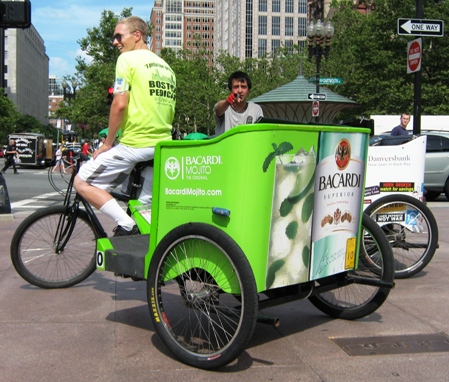
It’s obvious these guys are cool.
Boston Pedicab – The Boston Pedicab rickshaws can often be found around Fenway before and after games. You can find them all around downtown Boston too, especially at the Pru Center where people use them to ride to Sox games. They’re cyclists that pedal you to your destination for free; they subsist entirely on tips. Be generous. It’s a great way to avoid the traffic while enjoying a fine view of the city.
If you can’t find one, you can call Boston Pedicabs and they’ll send one out for you.

Beepball Wizards – The Boston Renegades

When a magazine suggests you write a piece about blind baseball players, you have to take on the assignment just to see how in the wide world of sports such a thing is possible. But indeed it is, and I covered the Boston Renegades for the Summer 2019 issue of BostonMan. You can read the article on their website here, or see the magazine article PDF here.
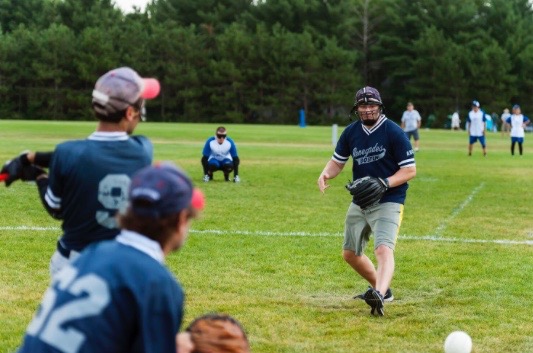
Beepball Wizards
The Association of Blind Citizens Boston Renegades are a powerhouse in Beep Baseball, a form of baseball played by legally blind people.
On the website for the Association of Blind Citizens Boston Renegades, the local Beep Baseball team, you can find a short video trailer for their documentary.
In the video, mere seconds after one player tells his heart-wrenching story of being literally struck blind, coach Rob Weissman is seen reprimanding his team. “You guys are going to pay for this bad practice,” he informs them. In another scene he lectures to a player, “Life isn’t fair. I worked my ass off when I played ball. I got cut every friggin’ time.”
Imagine telling a blind person that their desire is questionable. Talk about tough love.
But that’s exactly the point. At the end of the video, that same coach is seen firing up his players before the game, reminding them what success on the field is about. It’s about respect.
Rob Weissman cares enough to take a team of blind baseball players at the bottom of their league and mold them into dominant yearly contenders. In the last three seasons, they’ve compiled a 40-8 record and played in a national title game.
As coach says of the endeavor, it’s about more than winning games. It’s creating a culture of working together to achieve goals.

Rob Weissman isn’t as rough as he appears to be. He’s just a good coach.
When asked about the video, Weissman chuckles knowingly, as if he’s fielded the question a few thousand times. He gets that it’s dramatization and that a viewer’s reaction is exactly the goal of the trailer, but he’s nowhere near that hard-nosed coach that comes across in a small few captured moments. “It’s a teaser,” he asserts for the record. “If I was that tough, no one would be with this team.”
As he explains, there was a desire to change the team culture at the time, and someone needed to take the bull by the horns and lead the way.
“They made a decision that they wanted to be competitive, but a lot of them had never been part of a competitive team. So a lot of learning needed to happen. It wasn’t going to be ‘let’s go get pounded by the top teams in the league, and everyone’s going to love us, because they’re going to beat the crap out of us and we’re going to pay for the beers afterwards, which is what it was early in the history of the team.
“I said, look, I’ll be able to get this team up and running and I’ll be able to bring in great volunteers, but we have to change the culture.”
It’s worked. Weissman and his staff…he is quick to credit team owner John Oliveira, coach and pitcher Peter Connolly, pitcher Ron Cochran and coach Bryan Grillo among others…have created a winning atmosphere in Boston beepball. All with home grown talent.
“I think that we are the only team in the history of the league to go from being the doormat of the league to making a title game, only using players from our roster,” Weissman notes. “A lot of other teams will bring in people from other cities. We’ve never done that. Every one of our players has grown up in our system. We’re really proud of that.”
Sometimes working your ass off is worth it.
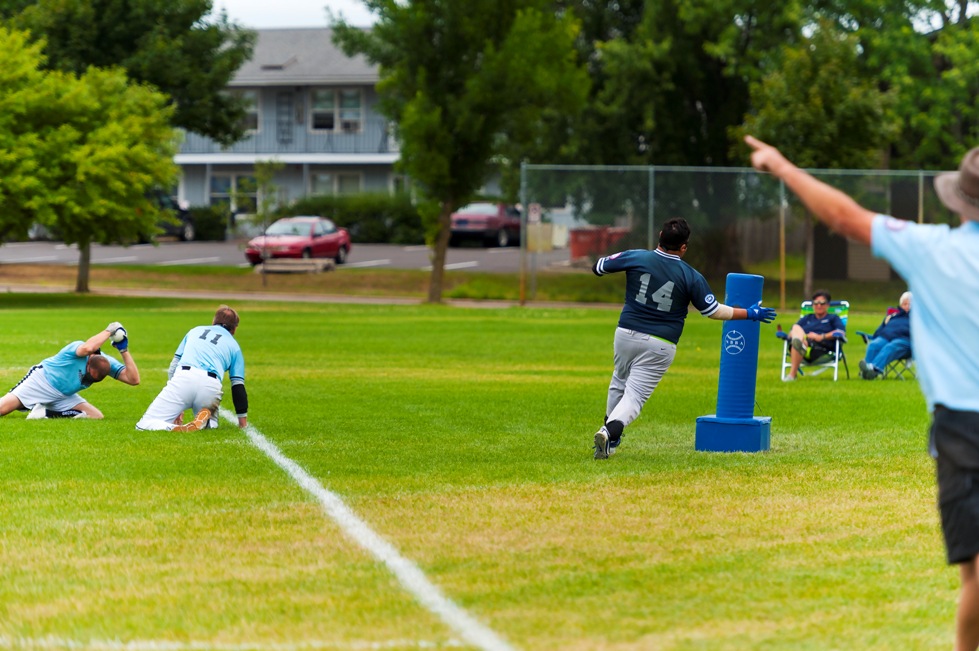
Baserunning is equally important in Beep Baseball.
Baseball for the blind. The words invoke instant confusion. Of the senses most needed to play baseball, vision easily tops the list.
Before you ponder how it’s possible for a someone to play baseball without seeing, consider this: there is a nationwide league. The National Beep Baseball Association features teams not just in Boston, but also in Chicago, Vegas, even Anchorage. There are 35 NBBA teams in all, and yes, there is a World Series.
Beep Baseball works like this: all players except the pitcher and catcher are completely blindfolded, to play on the same vision level despite their degree of blindness. The ball is softball-sized and is built with a beeping device in it, so defensive players can field it by following the sound when the coach calls out the fielding formation.
Batters are given four strikes, and the pitcher plays for the offensive team. The pitcher calls out to the batter when the pitch is thrown, and attempts to put the ball in the batter’s swing zone. If the batter makes contact and manages to hit the ball at least 40 feet, the defensive team moves to field the beeping ball. A ball hit further than 180 feet is considered a home run.
There’s no baserunning in the traditional sense. After contact, the batter runs towards one of two pylons that serve as bases, whichever one is buzzing. If a batter reaches the pylon before the ball is fielded cleanly, a run is scored. If the ball is fielded cleanly before the batter makes the bag, the batter is out. Games last six innings, or more if needed.

A contact hitter.
It’s easy to argue that a professional ballplayer hitting .350 is one of the most impressive achievements in sports. But even with a pitcher grooving the ball in a batter’s swing zone, it’s pretty impressive to see a blindfolded batter put a ball in play. If someone claimed that the Force was strong in better hitters, it wouldn’t be difficult to believe.
Peter Connolly, a pitcher and coach for the Renegades, explains the mechanics, and how hitters learn and improve their skills.
“It’s a combination of knowing your swing, being consistent, just honing in on your consistency. Maybe getting a little more power, maybe being able to go the other way in certain situations.
“If you can pop the ball up in the air for four seconds, you have a really good chance of getting to the bag. That’s another thing that you can hone onto, base running and getting faster. If you watch the good teams in the World Series, they have such speed that if they hit the ball and you don’t field it perfectly, it’s too late.”
Weissman agrees that just as with any sport, the skills can be learned. “We’ve all learned a lot over time about how to coach the sport better. And we’re constantly working on hitting mechanics.
“Joe Yee hit like 400 points higher than his career batting average last year. Some of that was him learning how to improve his individual skills, and being coachable enough to learn about how to move his hands, to be more aware of his bat path, to learn how to transfer his weight.”
Yee, incidentally, is Connolly’s cousin, and it’s an impressive pitcher-hitter battery.
“I think he was batting like .600 or something off of me last year,” Connolly says.
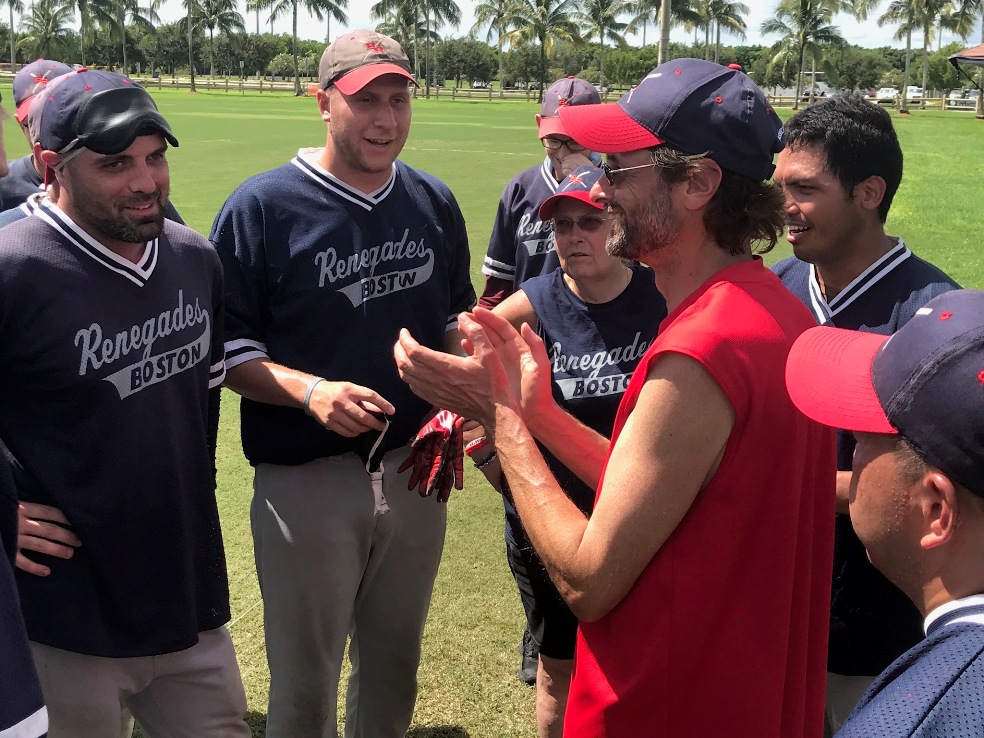
Weissman leading a newly inspired Renegades club.
Despite that Rob Weissman disavows his appearance as a tough coach, he does point out that players on his team want to be treated like athletes, not disabled people.
He amusingly remembers the story of Steve Houston, a former college ballplayer who lost his sight to diabetes, growing visibly annoyed and chewing out a pitcher for “babying” him when he learned the pitcher was throwing underhand to him. It’s impossible not to admire the mental fortitude of a player who believes he can handle a high hard one while blindfolded.
That said, Weissman knows there are limits in some cases. The Renegades don’t cut players, and anyone who is willing to make the financial and time commitment can play.
“One of our players, Melissa Hoyt, has Mitochondrial disease. It makes it very hard for her to breathe at times. We have another player named Rob, doctors told him he’d never play competitive sports. He’s a diabetic, so they’ve got other issues. We can’t put them out and play them 18 innings in a day. I know that they’re not gonna make it through warmups without having to take a break.
“But they’re great teammates. They’re very supportive and everyone’s very supportive of them. One of the most memorable moments that we had last year was when Melissa, who’s been with the team for a very long time, scored her first run. Every single coach and player on the team was just fired up about that.
“One of the things that’s so cool and unique about this team is just how everyone supports each other. And that we get wins in various ways.”
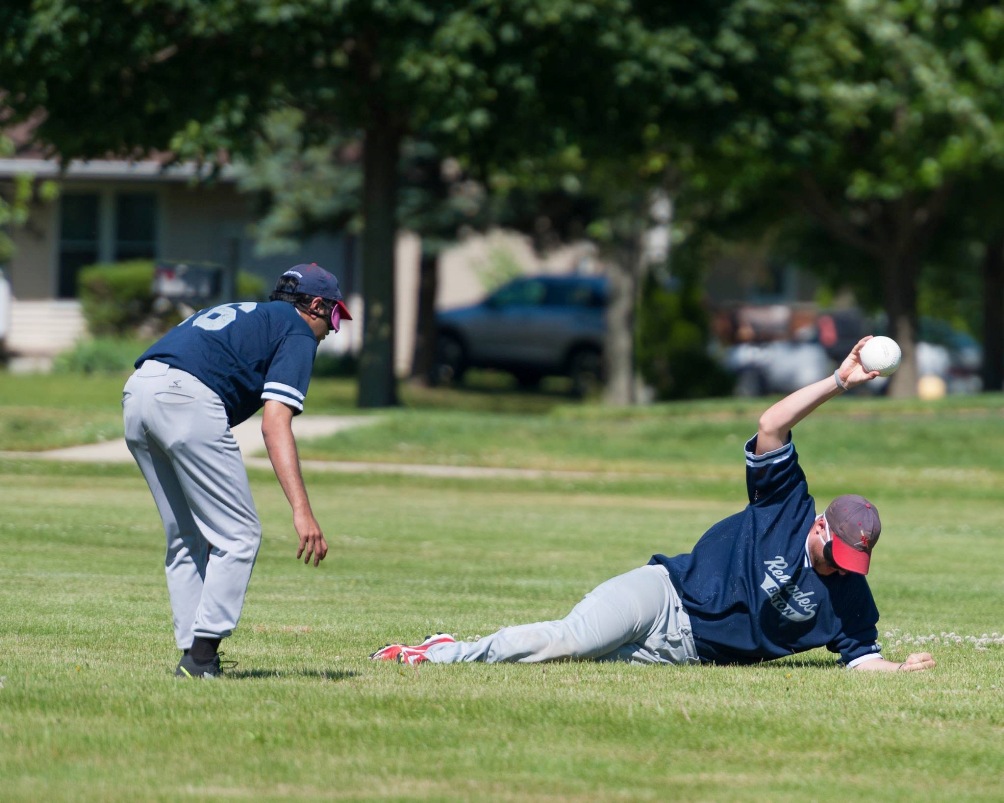
Play hard. Represent your city.
Back in 2003, Rob Weissman, John Oliveira and company had a vision. To give blind citizens in the Boston area a chance to come together and achieve something special, through baseball of all things.
Mission accomplished.
“When we took the field in the championship game,” Rob reflects, “for me, I think that was one of the proudest moments. It was like the Red Sox winning in 2004. And we wouldn’t have gotten here without the help of every single coach and player, past and present.”
Does Rob Weissman see a World Series victory in the Renegades’ future?
“I’d love to sit with you and say, our goal is to win a championship. But I think our goal every year is to be the best that we can be.”
Did this post make your day a little bit?
I hope so. If it did, I would really appreciate your support.
When you use this link to shop on Amazon, you’ll help subsidize this great website…at no extra charge to you.
Thanks very much…come back soon!
The Book of Beep Baseball
David Wanczyk, an English professor at Ohio University, was enthralled enough by the idea of beep baseball that he wrote a book about it, Beep: Inside the Unseen World of Baseball for the Blind.
In it Wanczyk chronicles the history of the sport, and documents the adventures of beep baseball teams, including the Renegades and Weissman’s fanatical dedication to coaching and winning.
Here’s a passage from Wanczyk in the book about Weissman:
“Like any manager, he’s concerned about injuries, field conditions, the umpires, the draw. And like some, he’s battling precompetition butterflies, otherwise known as chronic indigestion. Weissman doesn’t really eat, and when he does, he eats Pop-Tarts, two or three a day, like a college-student gamer somehow gluing together his wild thoughts with hard frosting. But Lisa Klinkenborg, the Renegades’ resident trainer/nutritionist, has forgotten to buy his Pop-Tarts on her grocery run, unf***ingbelievable, and he’s not sure where his next meal is coming from. He’s really not sure anymore.”
Wanczyk tells BostonMan this about Weissman: “He certainly stresses about the game, let’s say that. He’ll probably tell you more. And if you have trouble getting him to tell you, you can mention that my book says something about this and that I make the connection between his efforts and his health. If he wants to dispute that connection, he’ll probably do it in a colorful way!”
But Weissman isn’t the only dedicated one, as Wanczyk and his book point out. Beep Baseball features all of the intense struggle of competition within limits.
“The action on the field is fast-paced, and you’re watching dare-devil sorts of diving and colliding. But once the inning is over and the players make their way back to the bench, they will often move pretty slowly, listening for the voices of their coaches, or even finger-snaps to help them get to the bench.
Wanczyk makes the interesting point that “beep ball is about pushing limits, but those limits are part of the game. If a player runs as hard as he wants to, he overruns the ball. Blind people can do a lot, but they still have to do it deliberately, and coincidentally, that patient speed is the best way to succeed in beep ball.
“In Boston, we’ve always liked baseball underdogs. The Renegades are an underdog, and they’re always rallying.”
If you’re interested in a copy of Beep: Inside the Unseen World of Baseball for the Blind, it’s available on Amazon or at www.davidwanczyk.com.

They play hard, like any Boston team.
Support The Renegades
The Association of Blind Citizens in Boston currently operates the Renegades, and being a non-profit, they are always looking for volunteers, players, and donations. Rob Weissman says they have some creative ways to fund and operate the team, but they can always use help.
“Some of our volunteers, they work for big name companies. Like myself, I work for IBM, one of our volunteers, Aaron Proctor works for JetBlue. JetBlue and IBM are also very big proponents of volunteerism, so they’ll support us and donate money to the team or in JetBlue’s case, they’ll donate plane tickets to the team.
“The Challenged Athletes Foundation is an amazing organization; they allow players to apply for grants and they have been extremely generous and supportive. About seven or eight of our players were able to get almost $750 each out of the challenge that so that gets them halfway there on their fundraising.
“Regionally we travel with between 20 and 30 people. That’s a lot of people to put into hotel rooms. If you’re willing to donate to a cause, our budget’s $20-25,000 a year and any little amount helps.”
In addition, Coach adds the most important thing the Renegades need…volunteers and players.
“We’re always looking for great volunteers, if people have baseball skills, or time or any skills that they could offer. We’re always looking for people. This team would not survive without volunteers.
“At the same time, if you know somebody who’s visually impaired, we’re the only team sport that exists in Massachusetts. Have them get in touch with us and come try it out. It’s amazing, so many of the guys get so much out of it other than just playing sports. This goes well beyond baseball.”
If you’d like to make a donation, volunteer, or get the Renegades in touch with a blind person interested in playing ball, you can visit the website at www.blindcitizens.org/renegades.

Christian Thaxton, with the sweet swing that brought his bat to Cooperstown.
Making Cooperstown
The Boston Renegades’ website includes their top ten moments of the 2018 season. At the top of the list is their visit to the Baseball Hall of Fame, to see the exhibit of Christian Thaxton’s bat. There is a video of Thaxton, the top hitter in the history of the league, being shown the exhibit.
A year later, Weissman’s voice still cracks a bit telling the story.
“Baseball was in his blood. He played high school ball, he ended up getting onto a junior college baseball team and then finding out that he couldn’t see the inside fastball anymore, and that was the pitch he crushed.”
Thaxton went to see an eye doctor and was informed he was going blind.
“He dusted himself off quickly. He made a decision that he was going to come to Boston to learn skills to be a blind person, to go into the Carroll Center for the Blind in Newton.”
At the Carroll Center, he heard about the Boston Renegades, and it turned out he could still hit a baseball pretty well. Enough to make him want to stay in Boston.
“When he set the record for the highest batting average in the history of the league, Cooperstown came calling and said, we’d like to put his bat in the Hall of Fame. And last year, being with Christian and seeing him see his bat in a display case in the Hall of Fame, after everything that he’s been through, was amazing.”
And well deserved.
“Christian isn’t the type of athlete who’s all about himself,” Weissman adds. “He has taught so many of his teammates proper mechanics to swing. He takes such great joy out of seeing his teammates succeed. That’s who he is as a person.
“To give him the opportunity to see his bat in Cooperstown was unbelievably heartwarming.”
(all photos for this piece are courtesy of Rob Weissman, Lisa Andrews, David Wanczyk, and John Lykowski Jr.)
This post contains affiliate links. If you click on the links and then make a purchase, the site owner earns a commission at no extra cost to you. Thanks for your support.

Respect, Integrity, Trust – JDog Junk Removal

JDog Junk Removal recently opened their 200th franchise in the Boston area; BostonMan magazine asked me to cover the milestone. (You can view the magazine article here.) I spoke with owner Jerry “JDog” Flanagan and his partners about the company and their brilliant business model. (See JDog’s website here.)
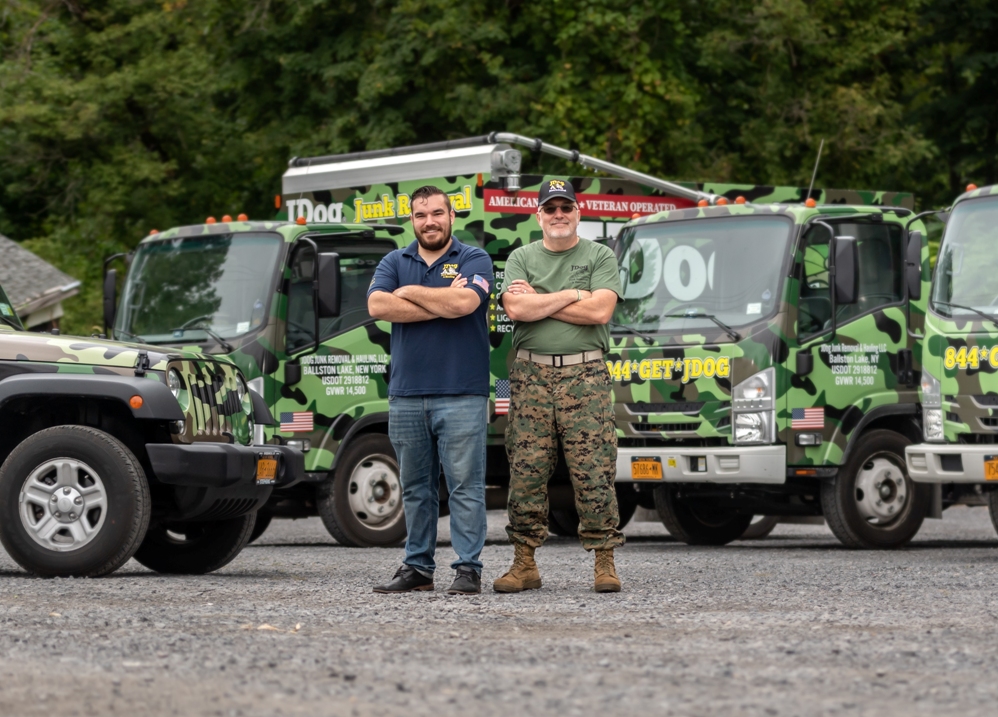
Respect. Integrity. Trust.
JDog Junk Removal is opening their 200th franchise here in Boston…and they’re bringing their military-inspired values of respect, integrity and trust with them. Those values have inspired a pretty stellar business model.
The idea of hiring veterans doesn’t need to be sold to business owners as a gesture of gratitude for their sacrifices. But there’s another very good reason. It’s great for business.
If you have any curiosity why, listen to R.J. Gagnon, co-owner of JDog Junk Removal’s new Boston franchise, tell you about Crazy Keith.
“When we interviewed him,” Gagnon says, “he needed help. We had a couple of concerns. Obviously he was a little older than most of our guys, doing this very physical job. And he was a Vietnam vet that came with his own set of troubles and conflicts.
“So the first thing we did was make sure that we found him a place to live in the area. We found him an apartment, and we helped him get established and get into programs to help him.”
R.J. and JDog needn’t have worried.
“This Vietnam War veteran, he rides his bike from his apartment to the bus stop, gets on the bus, rides into the city the hub is in, has a bike stationed at that bus stop, jumps on that and rides into work, repeats the process home, and repeats the process day after day.
“He is never late, he never calls in sick, and he works harder and faster than any 20-year-old on our crew. He has a nickname, Crazy Keith, because when they get done with a whole house cleanout, panting in the hot sun, Keith is still doing somersaults and flips and starting to stretch out with his martial arts moves. Those military values of completing your mission? That’s what he lives and breathes.”
Incidentally, that rubs off on team members.
“He is like a role model to some of the younger civilian guys. ‘How is this 62-year-old Vietnam vet out-hustling me? I’m 20 years old and he is out-maneuvering me out there!’”
R.J. Gagnon’s father, Ray, is a retired Marine Corps Master Gunnery Sergeant. The two are taking command of JDog’s 200th franchise, located in the Framingham/Worcester area. The growth of JDog, which originated in Philadelphia, has been swift and decisive…in no small part because of their hiring and franchising practices.

Jerry “JDog” Flanagan, making a difference for those who’ve made a difference for us.
Jerry “JDog” Flanagan, co-founder and CEO of JDog, was a wire dog in the Army, hence the nickname. He has never needed to be told the value of employing someone who has served in the toughest of environments. He knows the work ethic ingrained in a military uniform.
“You’re 100% accountable for your actions,” he says. “You learn how to respect people, you learn how to say yes sir, yes ma’am. And your work schedule is out of control. You’re going to work more hours than you’ll ever work in a civilian job.”
It was great life training for the workplace. “I was able to get to work before everybody else, I stayed later than everybody else, I volunteered for all the crappy shifts. It separated me from the average civilian.”
Flanagan learned, as most entrepreneurs do, that his work habits would better benefit his family if he owned the business himself.
With his wife Tracy, he started a kids party center in 2007. It went under in the recession of 2008. Without a college degree, he needed a better way to support his wife and daughters, so he researched recession-proof businesses. One of them was junk removal.
He started handing out postcards offering junk removal service to neighbors. The ones that hired him were immediately impressed.
“I had been doing it for about two weeks, when someone mentioned that I was doing the job so fast and on time, and I was in a polo shirt and was clean cut. They wanted to know where this came from. I said, well, I was in the military, so I’ve always been able to outperform anybody because of my work ethic.
“They said, ‘You should market that!’ So I slapped ‘Army Veteran’ on my business cards and stuck it on the side of my jeep.”
The response immediately showed that he was onto something. “The phone started blowing up and everyone started using me in the area. I lasted probably eight months, and I realized that I needed helpers.
“I went to the VA, and I hired compensated work therapy patients that were struggling with drugs and alcohol. Combat veterans that were coming back and couldn’t find work. I was rotating different guys into my trucks, putting them on the other side of couches and carrying items.
“They felt great about it, and we were able to run the business with almost all veterans initially. I realized that we had something big here, and my wife said we should franchise this thing. We sold five franchises, and I realized other veterans wanted to be part of this.”
As Flanagan says, it’s a hand up, not a handout.
“It’s not just about philanthropy. These are real businesses. They make real money, real equity for families. When you have that and you have fun doing it, and you’re putting veterans to work, and the community’s getting behind you…it’s just a recipe for massive success.”
His customers “just have a lot of respect for military, either side of the aisle, it doesn’t make a difference. I had no idea that it was going to be that powerful. I didn’t realize that the competitive advantage of being a military veteran business was that strong.”

Camouflage makes for some stunning logo artwork.
So why don’t more veteran-owned businesses trumpet military service, such as with the stunning camouflage-painted trucks like JDog uses? Gagnon thinks it’s a reluctance to use their service for personal gain. A reluctance that both he and Flanagan believe is misguided.
“I see it as a way to communicate that we’re respectful, that you can trust us, and that we carry ourselves with integrity,” Gagnon says. “Veterans became different people the moment they signed up. They’ve served everyone, and that brings with it some weight and value.”
Flanagan agrees that it’s an unquestionably impressive credential.
“The way I equate it is this: if you went to get your MBA at Harvard or you graduated MIT, what are you going to do? You’re going to put that on your LinkedIn, you’re going to put it on your resume, you’re going to let the world know, right? Well, veterans don’t do that, and veterans need to, because you could equate it as something similar of an accomplishment.
“There’s veterans out there that own a business, you’d never even know they’re a veteran. They’ve gotta figure out how to get their brand out there, because it really works.
“Customers are longing for someone to open the door up in their home, and say thank you, good morning sir, look them in the eye, do a really good job and have respect, have integrity and have trust. And the company was founded on respect, integrity, trust.
“They’re going to use us over and over again. They’re going to tell their friends and family. They tip us, they make sandwiches, they leave their doors unlocked for us to go in when they’re not home. It’s insane. There’s not one other service model out there, plumbers, painters, you always feel like you’re getting ripped off. In our case, it’s the opposite.”
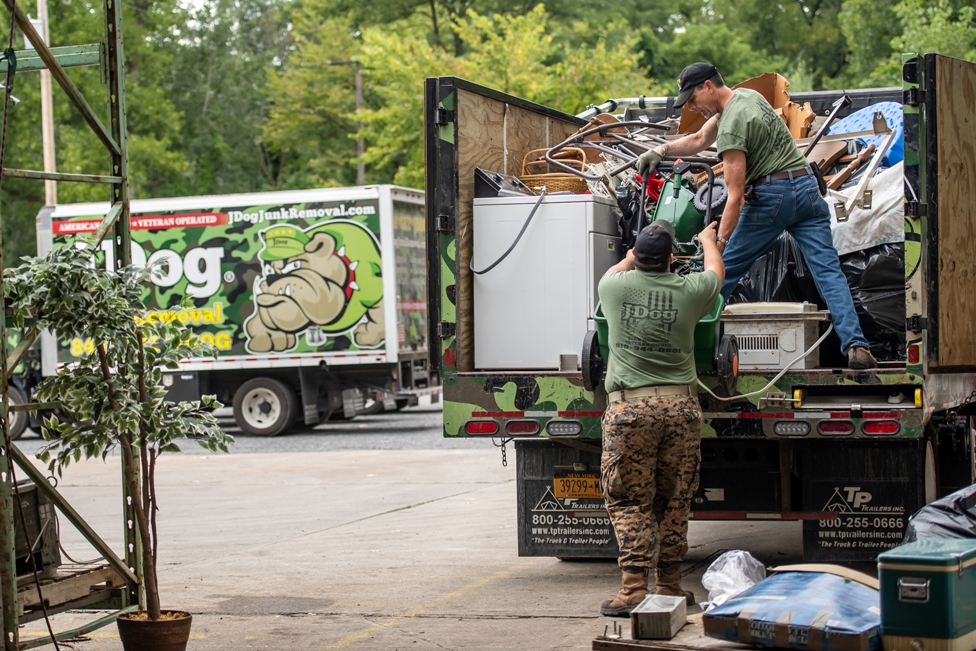
JDog has an effective recycling program as part of its business model.
JDog is not only a phenomenal success story for veteran employees and franchisees, they’re a tremendous boon to communities they serve, both by helping local veterans and protecting the environment.
Between 70% and 80% of what JDog collects, according to Gagnon, never reaches a landfill. They use a process R.J. calls the three Rs: re-purpose, re-sell, or recycle. Still-usable items, such as furniture, get donated to charities helping veterans in the area. For items that are re-sold, proceeds go to funding charitable functions. Other items get recycled, including paper, cardboard, glass, plastic, wood, and metal.
Everyone benefits. “Those programs are part of the reason why they decided to go with JDog. People know that it’s not just a junk removal company. We’re actually doing something good here.”
Their 200th franchise in the Cradle of Liberty, while obviously momentous, is just another stop on the freeway. JDog has signed on for 300 more franchises, including a few more in the Boston area.
In the space of just a few years, Jerry Flanagan and his warriors have built an extremely lucrative business with one simple premise…that military values of respect, integrity and trust bring an almost unbeatable competitive advantage to an enterprise. More importantly, Flanagan, his wife Tracy, and his business family like the Gagnons, have found a calling.
“The model that started out as a way of survival has turned in to a massive inspirational company that’s changing families and lives,” Flanagan reflects.
“We’re bringing veterans back together under one ethos of brotherhood. And that gets me up very early every day. It just doesn’t stop, because if there’s a veteran out there in the United States, my obligation is to put them in business wherever they are in the country.”
Judging from JDog’s astounding growth, it looks like Americans are on board with the plan.
Did this post make your day a little bit?
I hope so. If it did, I would really appreciate your support.
When you use this link to shop on Amazon, you’ll help subsidize this great website…at no extra charge to you.
Thanks very much…come back soon!

A great deal for military members and potential business owners.
Own A JDog Franchise
JDog is offering franchises by the truckload, but their focus is franchising to military veterans and their family members. Having a DD-214 or being an immediate family member who can show a DD-214 is a must. They also take a good look at a prospect’s finances, conduct multiple interviews and introduce them to their staff.
But if you’re a veteran looking to run your own show, it’s a great deal.
“Basically we wind them up and let them do their thing in their markets,” Flanagan says. “We’re not killing everybody over small stuff, as long as they’re running their operation properly.”
Gagnon, whose strength is marketing, understands the benefit of such creative control. “We’re empowered to make the business decisions that we have to make that make sense for our business and our territories, which you don’t get with a lot of other franchises.”
Flanagan also believes in rewarding the ones that do well over time. “We have a flat, scalable royalty. What that means is they pay a flat royalty a month regardless of what their sales are. So if they’re doing higher in sales, they keep those proceeds, they keep the recycling dollars, they keep the re-purposing and reselling dollars, which allows them to expand and reinvest back in their own territories.
“A lot of these guys are getting fees for their call centers, their routing systems, their website, their PR. We don’t charge for any of that stuff. That’s all part of the franchise, which makes it very, very affordable.”
If you’d like to find out more, there’s a separate page on the JDog website dedicated to franchising, including a video of the benefits. It’s at https://www.jdogfranchises.com/.
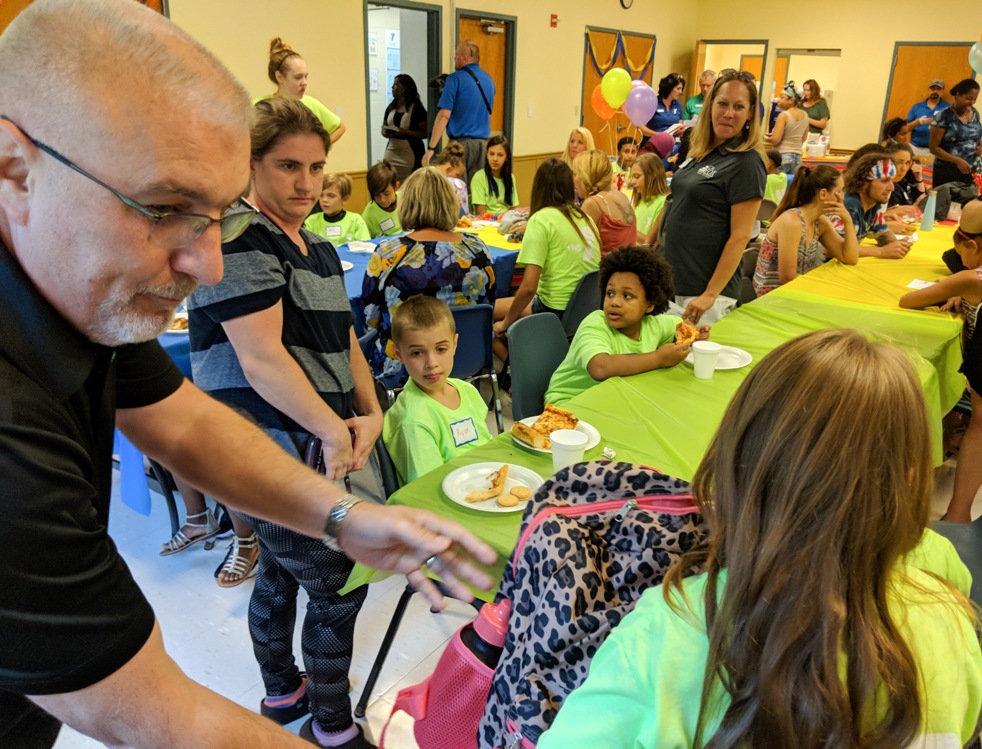
Offering a hand to the heroes of the future.
Giving Back: The JDog Foundation and Military Spouses
JDog is philanthropic by nature, donating furniture and usable goods to veterans in need and using proceeds from recycling for charitable events. But now they’re giving back to America’s finest too, with the recently formed JDog Foundation.
The JDog Foundation’s mission is to “provide leadership, support, awareness, and funding to Veteran Organizations that are charged with rebuilding or repairing homes and lives for our Veterans.”
They’ve landed a good representative to head the foundation…Ralph Galati, a former POW who was captured when his plane was shot down and landed in the Hanoi Hilton with John McCain. He was released in March of 1973, just after his 25th birthday. Galati is the former Director of Veterans Services at St. Joseph’s University in Philadelphia.
JDog franchise owners also benefit from Tracy Flanagan’s Military Spouses program, the group of women supporting their business owner husbands. Tracy writes a newsletter and manages the group, Jerry says. “It’s just supporting their franchisees out there through the women, who really run the operations and the houses behind the scenes, really.
“We all have to answer to somebody and it’s those women out there that are really strong.”
If you’d like to find out how to contribute to the JDog Foundation, it’s at https://www.jdogfoundation.org/.
(all photos courtesy of Jerry Flanagan and JDog Junk Removal.)
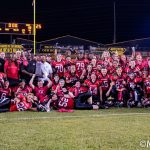
A Family of Renegades – Women’s Football in Boston

The Boston Renegades women’s football team are the current champions of the Women’s Football Alliance. I spoke with several of the team’s players for a piece about them for the Fall 2020 issue of BostonMan. You can read the article on BostonMan’s website, or check out the PDF of the magazine article here.
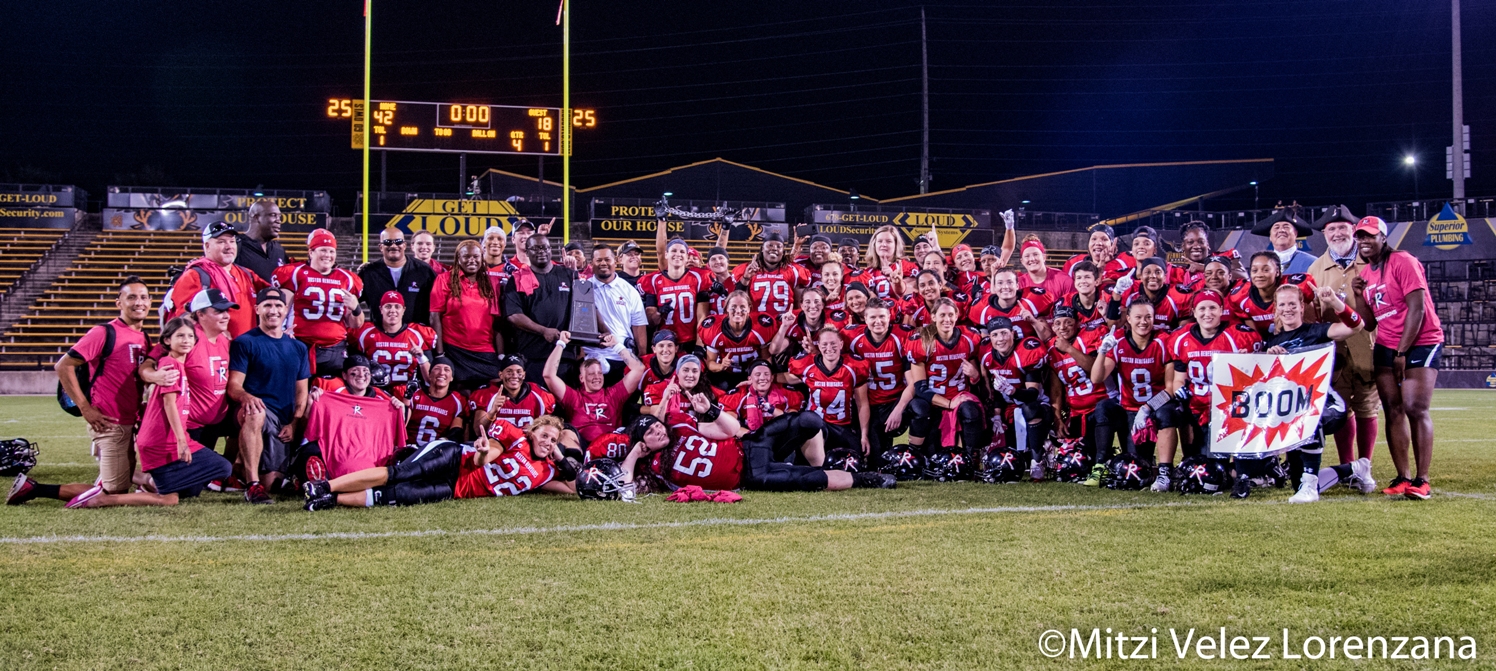
The Women’s Football Alliance Division I Champions.
A Family of Renegades
ESPN and ABC have recently aired “Born To Play”, a documentary covering the Boston Renegades, the 2018 and 2019 Women’s Football Alliance Division I Champions. Like most sports teams around here, they do our city’s fans proud.
Viridiana Lieberman took a chance on her dream documentary having a letdown ending.
It almost didn’t work out.
Fortunately, the team she chose to cover lived up to its city’s recent formidable sports reputation.
Lieberman’s 90-minute feature “Born To Play” tells the story of the Boston Renegades, the women’s tackle football team, and their 2018 season. The ride is rough early on, with the logistical problems of a struggling sports league…including games getting called for lightning, opponents not showing up, and half-full grandstands.
It grows bleaker as the season progresses. The Renegades fall to the Pittsburgh Passion and their arch rival DC Divas, and will have to go on the road against both teams in the playoffs.
Spoiler alert: it works out fairly well. If you’re a football fan, if you’re a Boston sports fan, watch “Born To Play”.
The ending is great, you’ll love it.
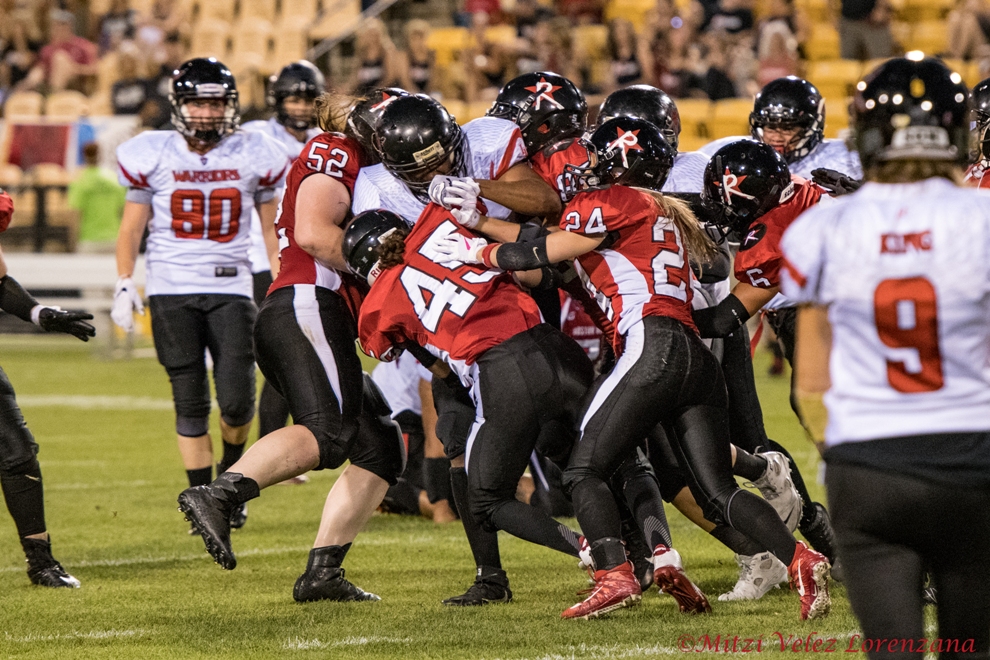
These girls are ready to play some football.
Wait, what? Women’s tackle football?
Yes, Lieberman heard that a lot too. She couldn’t, she says, count on one hand the number of people who had heard of it in conversations she had. But yes, there is a league, the Women’s Football Alliance, with close to 70 teams that play throughout the country.
She faced plenty of pressure to focus on the surprise factor of women playing football, but she refused to budge on presenting the Renegades simply as professional athletes. “Born To Play” isn’t a women’s interest film. It’s a football film.
“It was about giving them the cinematic treatment that their male counterparts have gotten for so many decades,” Lieberman says. “Of course women can play football. It’s just a matter of, you didn’t know they were playing in this established league, that the rosters were this deep, that they had an entire coaching staff.
“I had a fantasy that I was going to write my own ‘A League of Their Own’, that I could turn into a film. Then I got into documentary, and well, it exists. So that was what set me on my track to find the team to follow.
“Undeniably the Boston Renegades.”
“My goal is to create awareness, and hopefully help them get the resources they need to grow their sport, but also get some butts in the seats and start cheering them on, because they deserve it.”

Renegades’ QB Allison Cahill hands off to star RB Chante Bonds.
The Renegade players that were kind enough to speak with BostonMan never spent a second equating themselves with the Patriots, even though they’re all far better football players than most males will ever be.
Quarterback Allison Cahill, for example, possesses a pinpoint cannon of an arm. She has a career 60.7% completion percentage and a 115.96 QB rating. Chante Bonds, a multiple position player, played well enough on both sides of the ball to be the 2018 league MVP. Cornerback Briannah Gallo is a three-time All-Star and a member of every Boston championship team, including when they were the Boston Militia.
Cahill, who emerges in the film as a quiet leader, downplays their considerable abilities.
“I do believe we have a place,” she says. “We’re not contending that we’re as good as NFL players by any stretch of the imagination. People don’t do that with high school teams. They don’t go to an Everett High game and expect to see the Patriots.”
Bonds is similarly humble for a league superstar. “Spectators are looking to watch women’s basketball, expecting to see what the NBA does. If you settle in and you’re watching, these women play at a high level, then you’re going to understand the game on a different level and you’re going to enjoy it.”
Indeed, you can see some exciting football in the WFA. “Born To Play” showcases a particularly epic Renegades battle with the Chicago Force, a game that benefited from a better than usual broadcast.
Bonds carries the Renegades on her shoulders throughout the game, making key plays on defense before going on offense for the last play of regulation…and catching a 40-plus yard touchdown pass. The touchdown and two-point conversion ties the game, which the Renegades then win in OT. The game even features Divine Intervention, with heavy rain and winds suddenly vanishing as the touchdown pass is thrown.
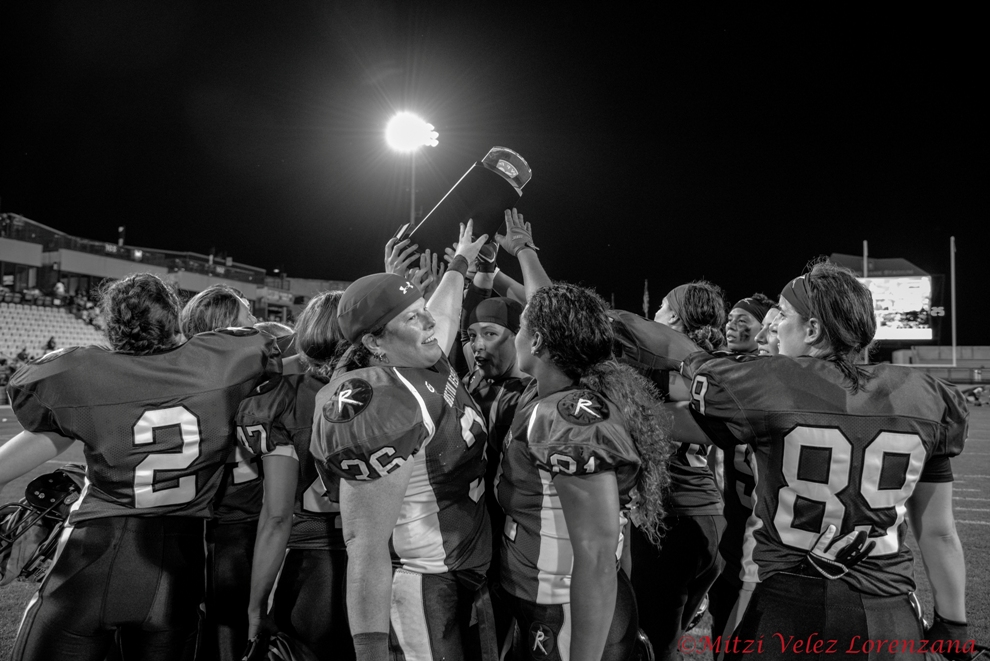
A family dedicated to winning.
The Renegades are arguably the most dominant team in WFA history. Since the league began in 2009, the Renegades have won four Division I titles, including two as the Boston Militia. They’re also the current champions, having won the last two campaigns.
With players not being paid, that success results from excellence for the sake of it. The Renegades’ achievements are dependent the entire organization understanding that.
Michelle McDonough, the team’s Director of Business Development, speaks about the dedication to putting a quality product on the field. “Practicing the way you’re supposed to practice, coaching the way you’re supposed to be coached, an overall commitment to the sport.
“This is more than a hobby, for every person involved in our organization, at every level. When they decide they first want to join, they either convert to have the same interest and commitment that Al and Chante and Bri have shown over the years, or they move on.”
Cahill agrees. “We take a lot of pride in passing along the tradition of women’s football in Boston, and what that level of commitment means.”
She credits upper management too.
“We are really dependent on high quality coaching, and even attracting high quality coaches comes from a competent and well-run management team.
“Our general manager, Ben Brown, does an amazing job of recruiting and bringing in new hungry athletes. And from there, it’s the job of everyone else to indoctrinate them.”
Strong word, indoctrinate. Are there hazing ceremonies?
“We can’t tell you that, come on,” Cahill says with a chuckle.

Chante Bonds, the power behind the Renegades’ offense.
Of late, this town has a way of breeding champions too. Bonds believes it truly is a regional thing.
“I was having a conversation about being raised or raising a child on the East Coast vs. the West Coast. The conversation was basically around grit and toughness and perseverance. I’m a little biased, but I feel like East Coasters have all of that. Just being in this weather for eight out of twelve months of the year and surviving that is one piece of great perseverance.”
About Boston, Cahill adds, “I think about work ethic, I think about education. I think that those are two things that have set us apart. Just how hard we study, how hard we prepare, the lengths we go to for our physical preparation. I like to think those are woven into who we are and where we’re from.”
Gallo agrees it’s part of the New England psyche. “When you look at Boston sports teams, it’s not always about that one standout athlete. We have Chante and Allison, who are probably two of the best female football players in the league in their positions, and they’re the most humble athletes.
“New England is very fast paced,” she continues. “People have a certain type of attitude. It’s a different character, a different animal here. I think that that truly makes all of us collectively better because you can relate to one another.
“We just truly are a family.”
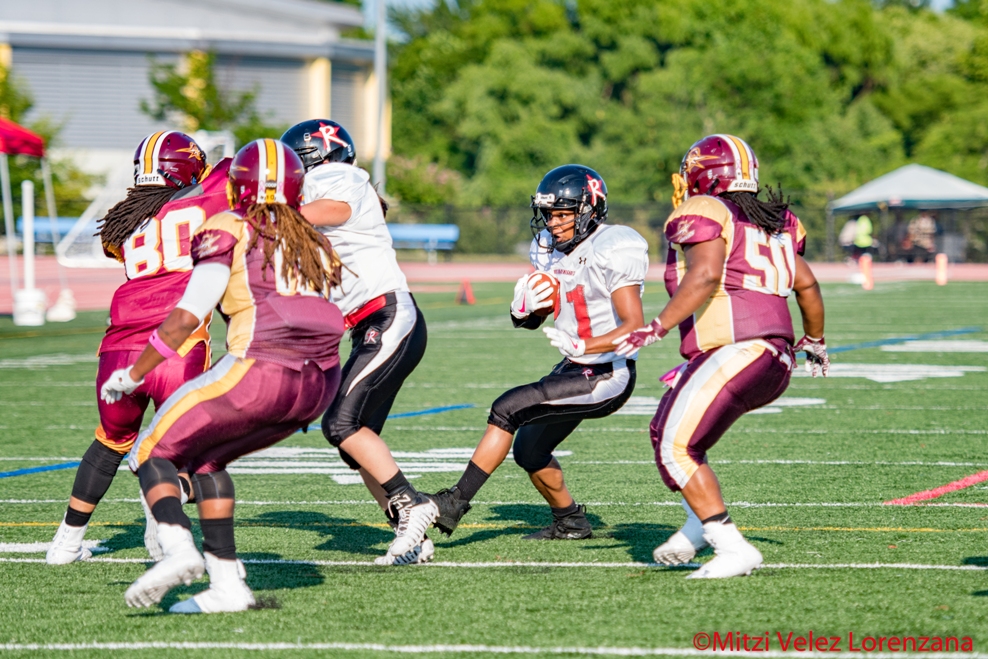
Key blocks win football games.
As “Born To Play” shows, not even the reigning WFA champions are playing in front of packed houses. The team continues to survive on the single-minded devotion of women who work day jobs to pay league fees, and then put their bodies on the line during the game.
Allison Cahill, Chante Bonds, and Briannah Gallo aren’t likely to sign six-figure contracts to play football in their lifetimes. But impact isn’t measured in dollars. Gallo shares a story of what the Renegades have meant to one young athlete.
“I work in the sports retail business. I was at work one day and I was helping a family. There was a little girl that was playing football for the first time. The mother had a list of everything they wanted the players to have, and I helped them. I never said who I was. After I got her everything, the mother asked me how I knew so much.
“I was in Plymouth, nowhere close to Boston. I said I play women’s tackle football for the Boston Renegades.
“The little girl’s face lit up. She got so excited. She started jumping up and down because she followed our team, her dream was to play football. As she walked away, she was tapping her mom saying, ‘I can’t believe I met one of them!’”
Bonds has similarly learned that the people who matter most, the adults of our future, are watching.
“When the documentary aired, I had a watch party at a family member’s house. Seeing my nieces, one who’s thirteen and the other who’s seven, glued to the TV screen watching me and our team made me really, really proud.
“Just being a part of something that was so special, that is so special, and showing my nieces. It’s like, you can do this.
“Whatever it is that might seem nontraditional? It’s possible with the right people around you.”
Did this post make your day a little bit?
I hope so. If it did, I would really appreciate your support.
When you use this link to shop on Amazon, you’ll help subsidize this great website…at no extra charge to you.
Thanks very much…come back soon!

Giving significant time and effort out of pure love of the game.
Supporting The Renegades
Partially due to simple lack of awareness…something Viridiana Lieberman was hoping to address in her film…the Renegades don’t often play to filled grandstands. They survive on T-shirt sales, concessions at games, league entry fees, whatever they earn at the gate, and donations. Traveling for most WFA teams is particularly difficult and expensive, and sometimes teams can’t pull it off, as the film shows.
Michelle McDonough is aware that the WFA has a tough mountain to climb. But the situation is improving.
“The documentary touched a lot on the competition and the leagues and how difficult and challenging it can be for teams that don’t have depth to run a full season. To know that you’re going to come in and play against Boston, and potentially have a tough time competing.
“Injuries get the best of you. Money gets the best of you. There are many reasons not to fulfill your obligation that are at no fault to a love of football or the game.
“But I think that as a whole, things have been getting better. As we look at our division and our schedule, teams that don’t have enough people are few and far between, and teams are becoming better funded, and have stronger commitment to their own physical well-being and ability to keep players on the field.”
On the Renegades’ website, you can become a team sponsor, order a 2018-2019 National Champions T-shirt, or make a donation to help the team cover expenses. And of course, learn more about the team and its history.
Finally, when football starts again, get out and see some tough girl athletes play some football. The Renegades play their home games in April and May, at Harry Della Russo Stadium in Revere.

Viridiana Lieberman, director of Born To Play.
Born To Film
Viridiana Lieberman has made a few documentary films, including “Fattitude”, a film that examines the discrimination and impact of fat shaming. Her name appears quite a few times in the credits of “Born To Play”, including for direction, editing and production.
Although she doesn’t have a true favorite moment of the film, she shared one passage that she’s particularly fond of with BostonMan.
“I did always imagine being able to give a treatment of a scene where a woman was telling the legend of a play. That it would feel so from the history books, the way that I watched on NFL Films my whole life.
“When Chante tells that story of the Chicago Force, my soul explodes, I just feel like it feels as exciting and epic. I had multiple players tell me that story, oh, there was this one game against Chicago. I thought, this is that story that they tell their grandkids.
“To be able to edit that section and bring it to life with the footage, there’s something about blending the present in history and giving it a cinematic treatment. That moment that felt like I was cementing it in history.”
With Lieberman’s love for sports, “Born To Play” was, she says, her Super Bowl. That said, she wouldn’t mind doing more films chronicling female athletes, something she has certainly proven herself qualified to do.
“I am most proud that I was able to get a mainstream distribution on a story that did not create special treatment because they’re women. So I feel like now that it’s out in the world and the response has been so amazing and people get it. I will make more films in my life, but I also know that this felt like my life’s work because I’m such a big football fan.
“If I become typecast as a director making films about female athletes, I will be happy.”
You can learn more about Lieberman’s work at her Squarespace site.
Viridiana Lieberman photo courtesy of Viridiana Lieberman. All other photos courtesy of the Boston Renegades.

